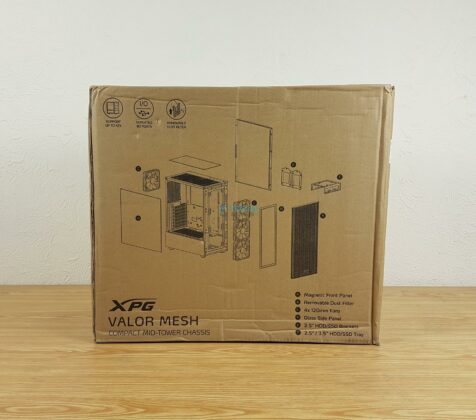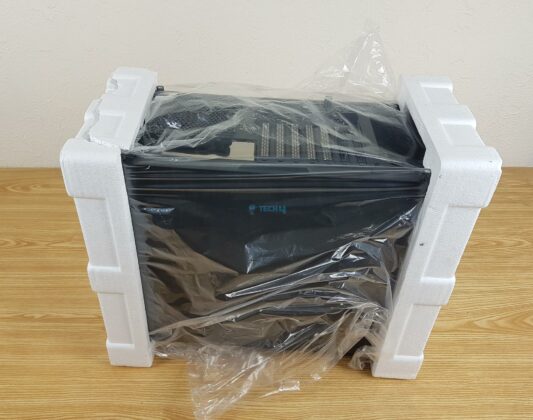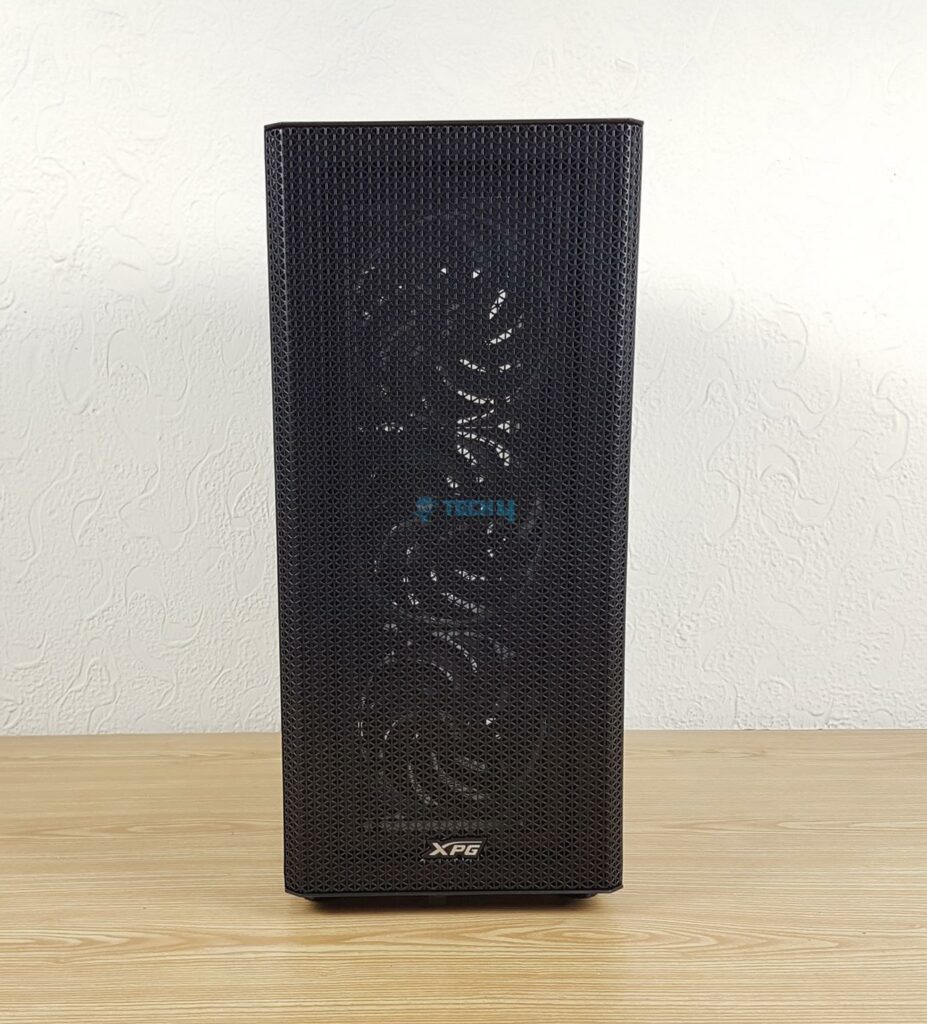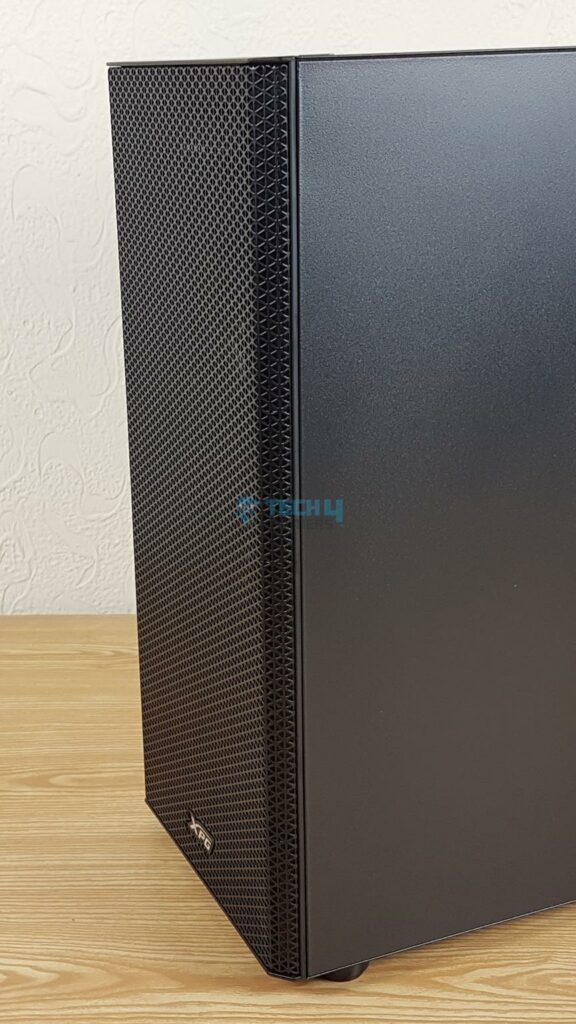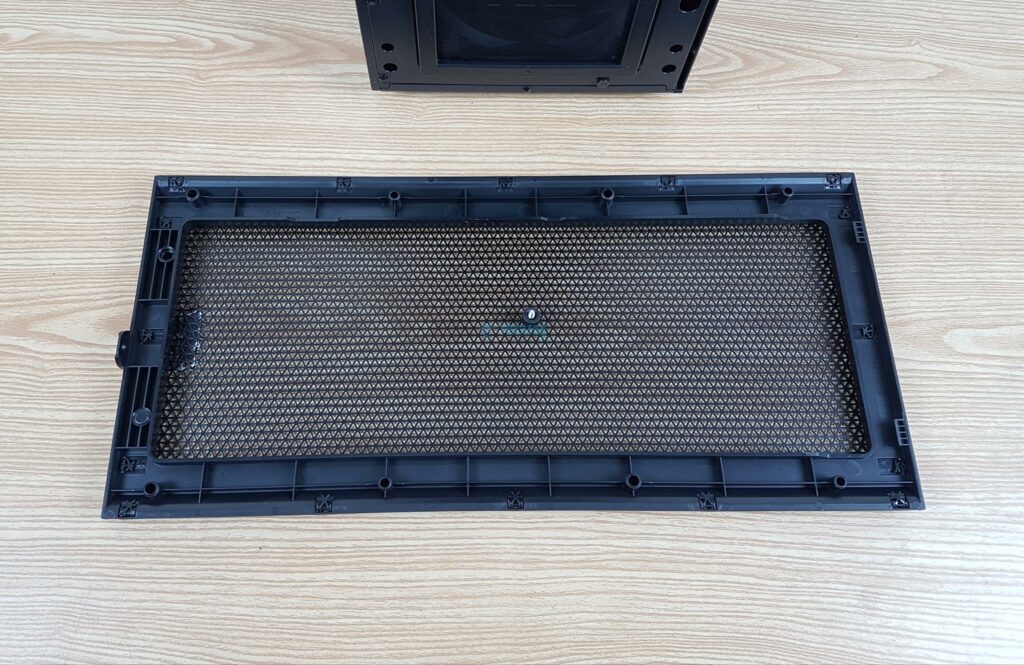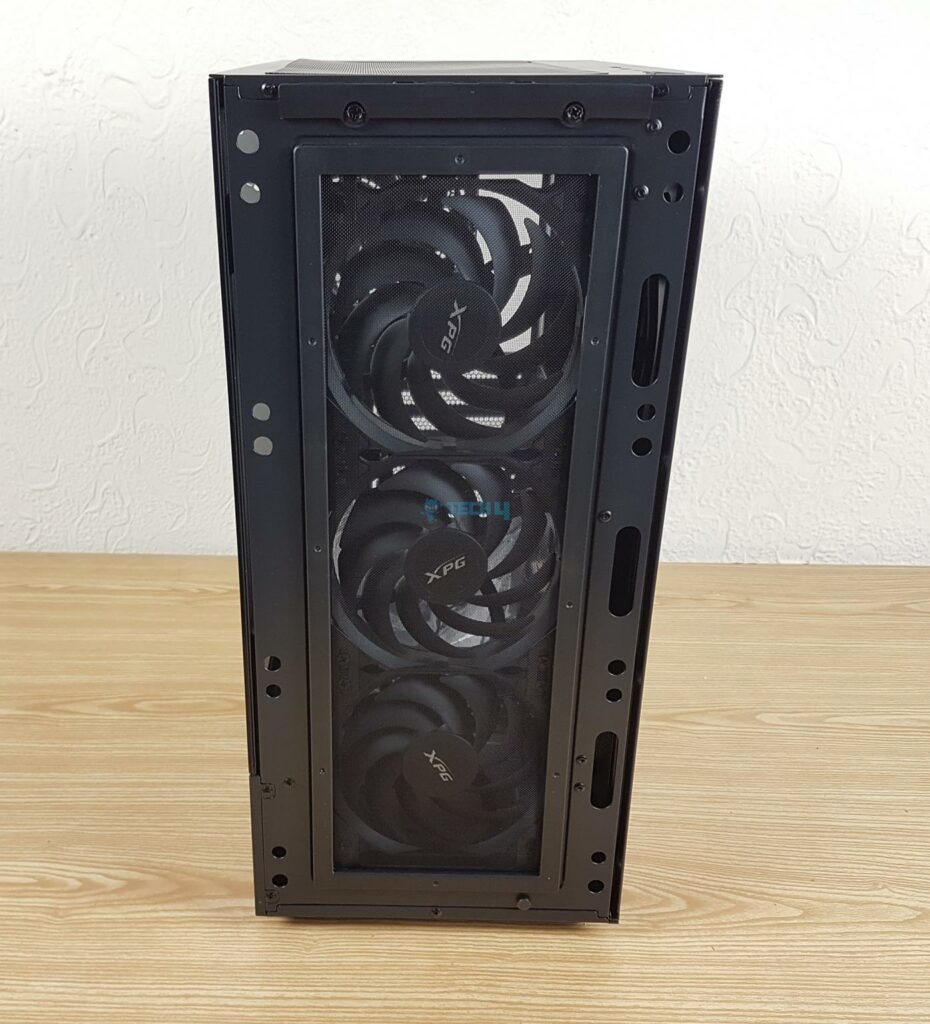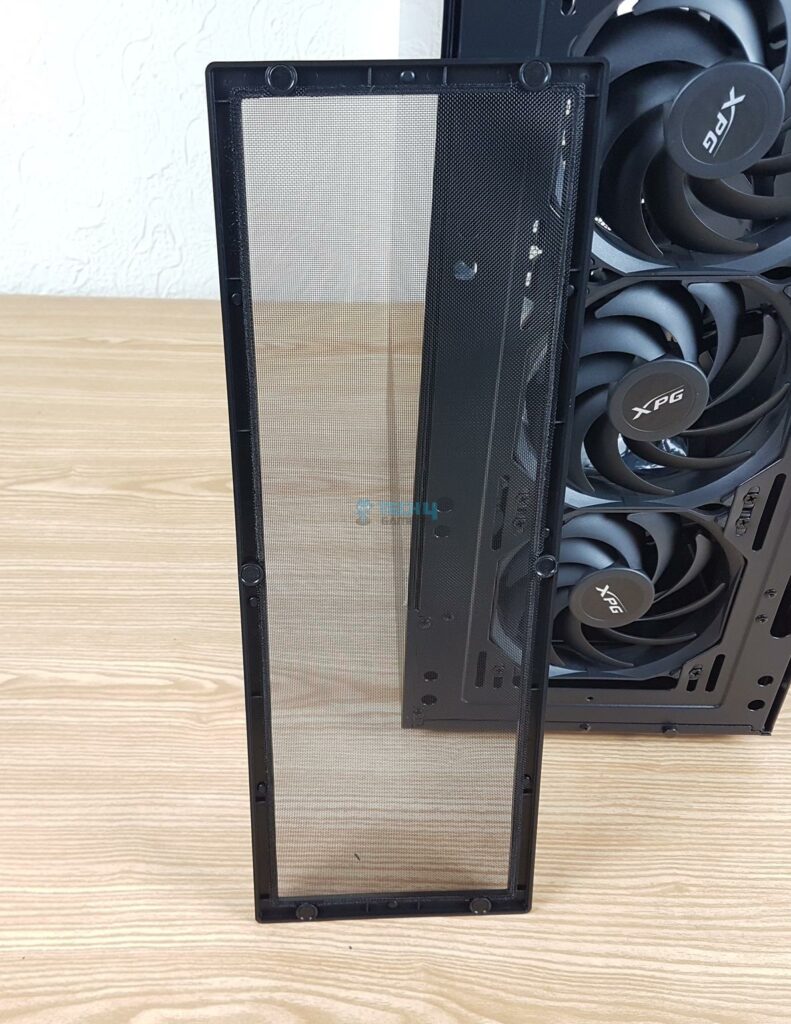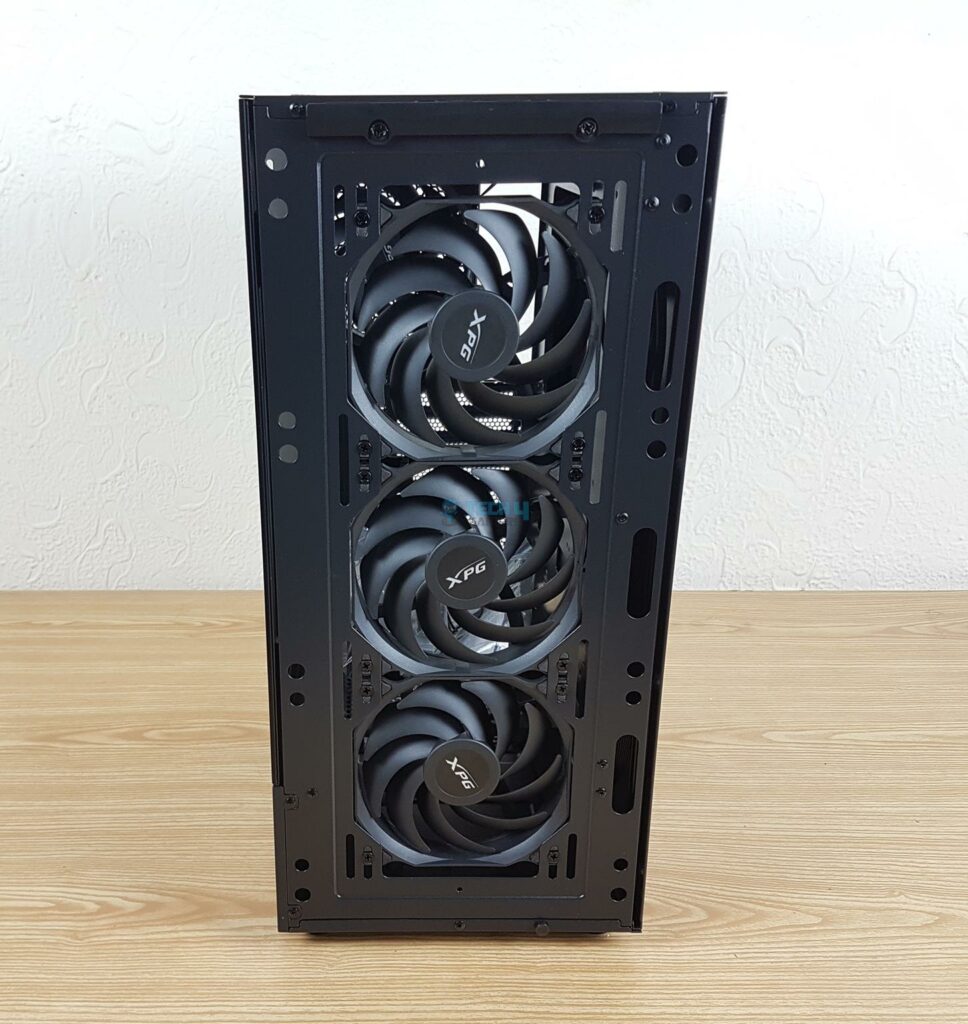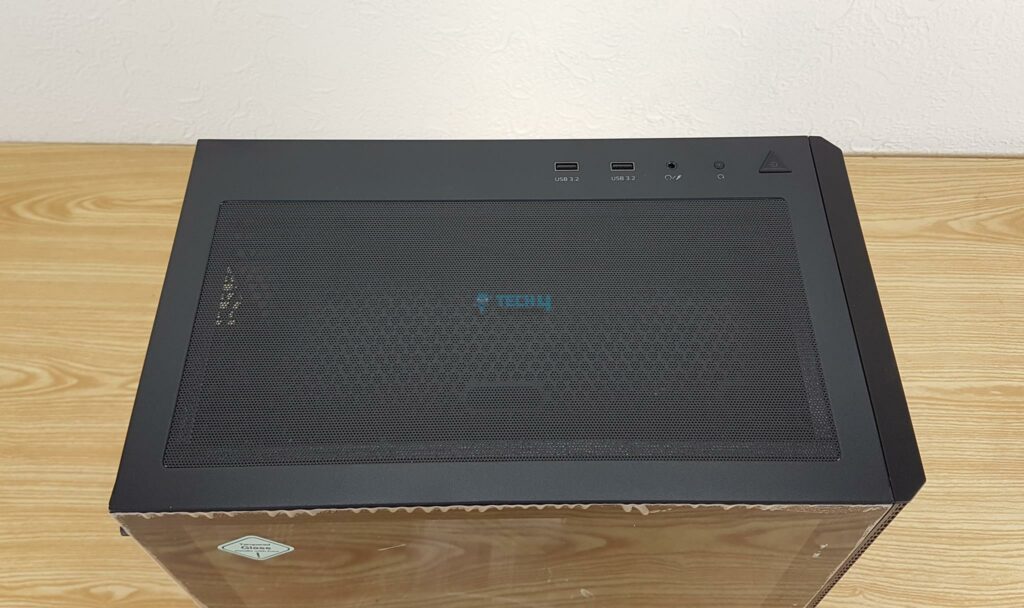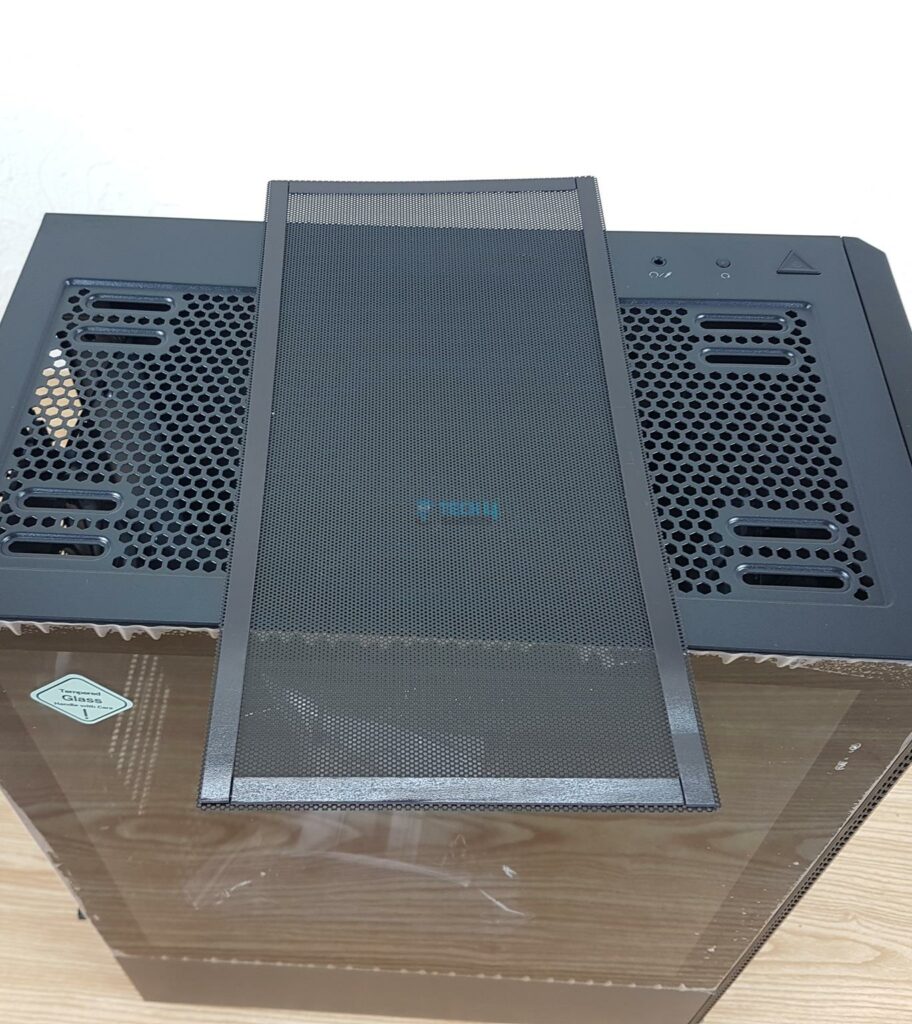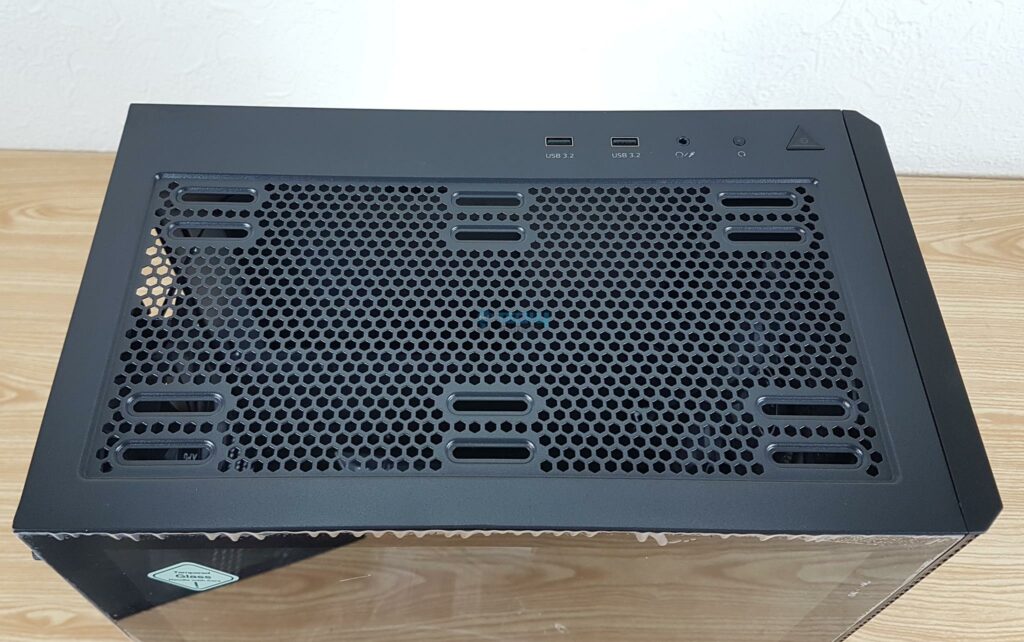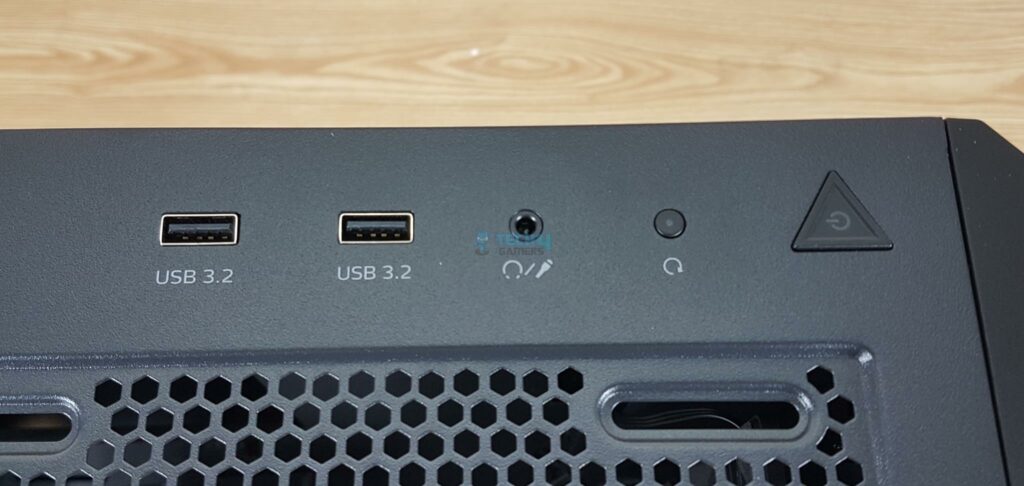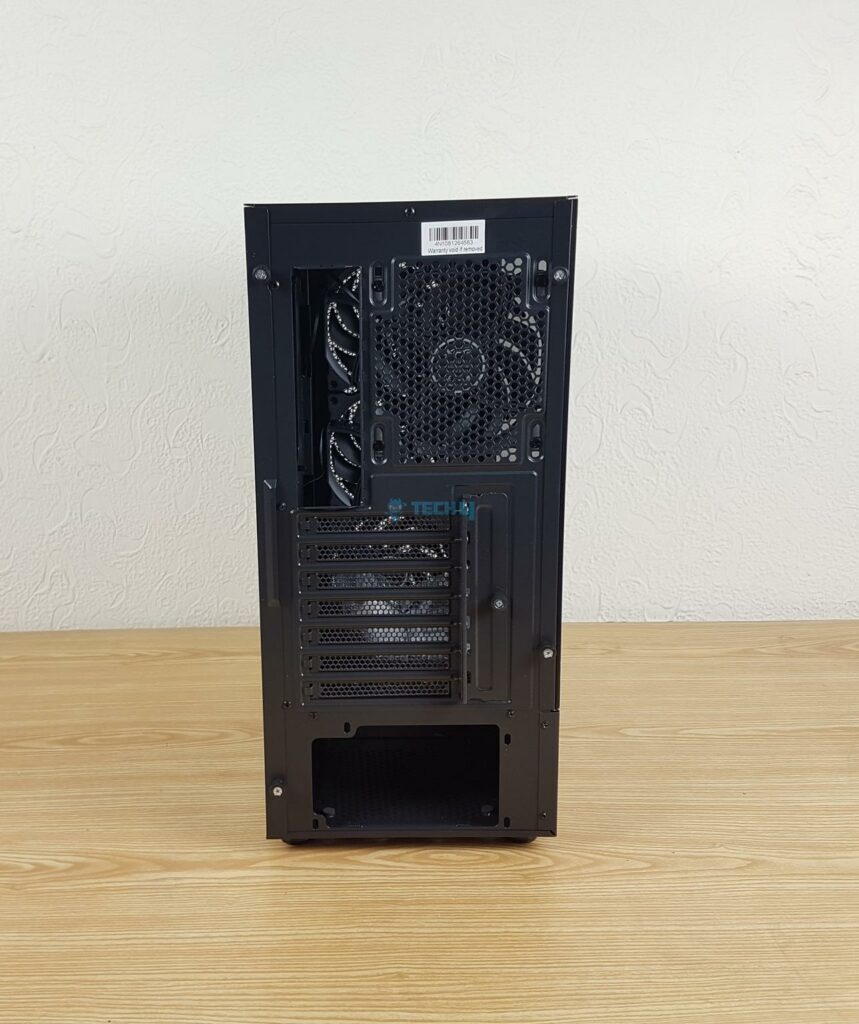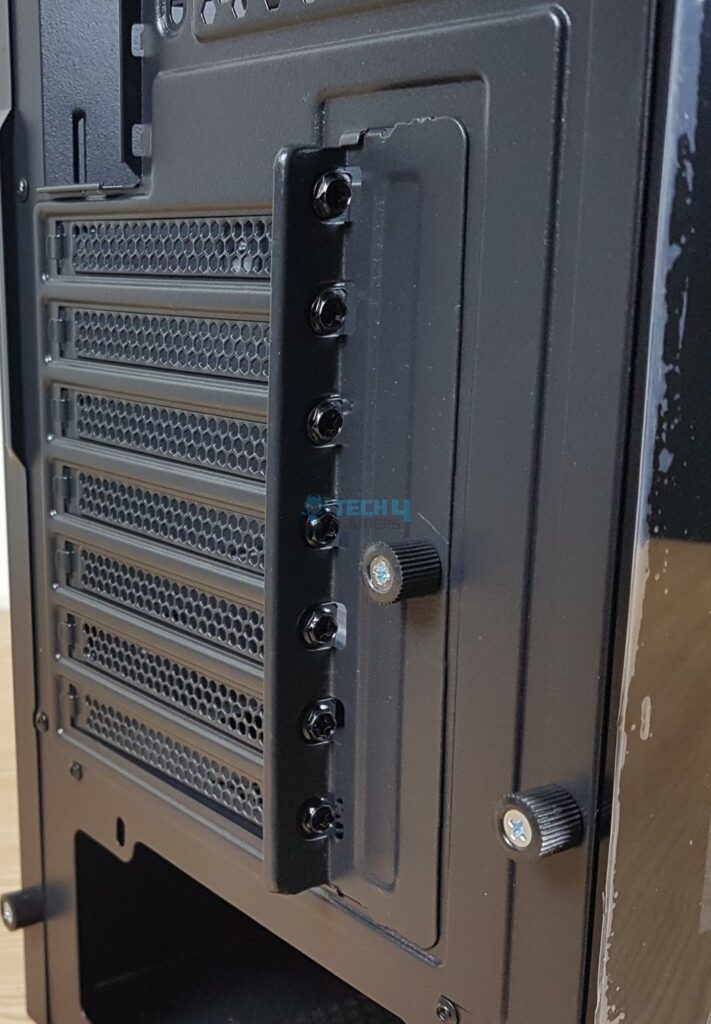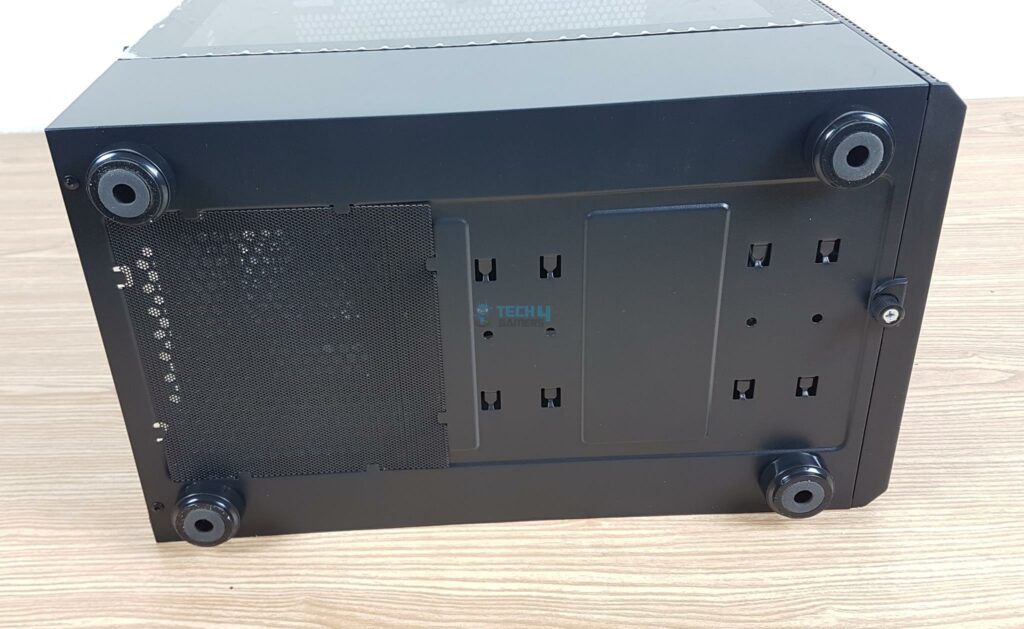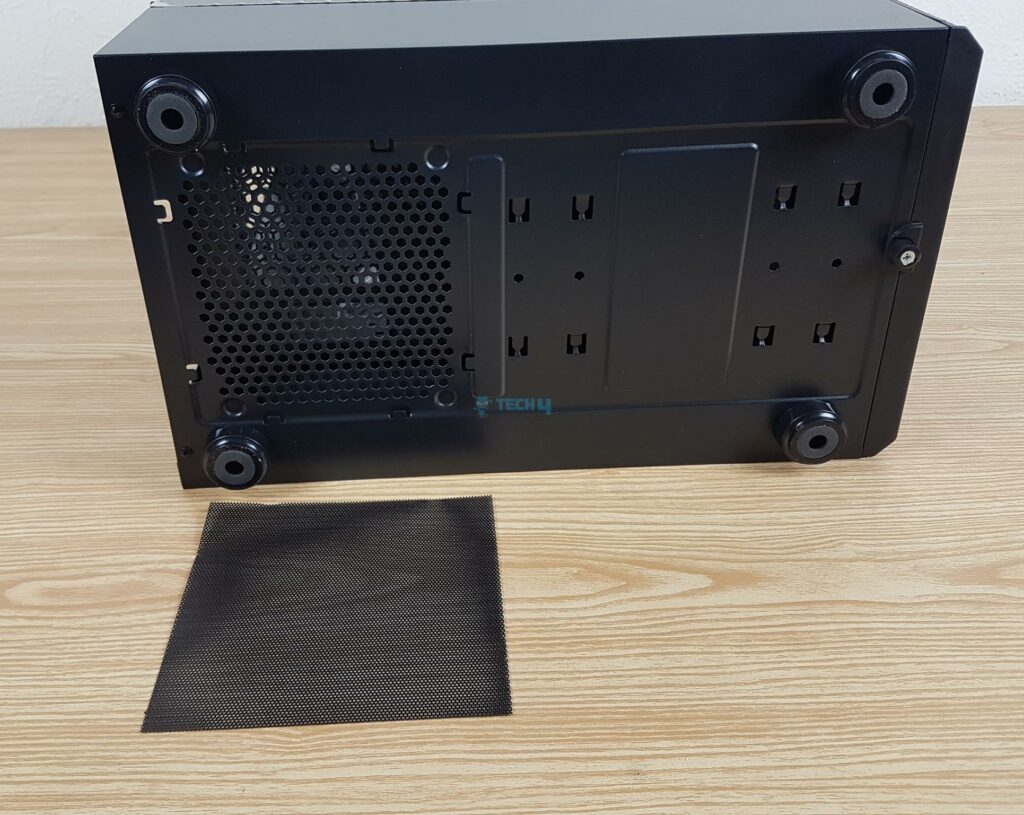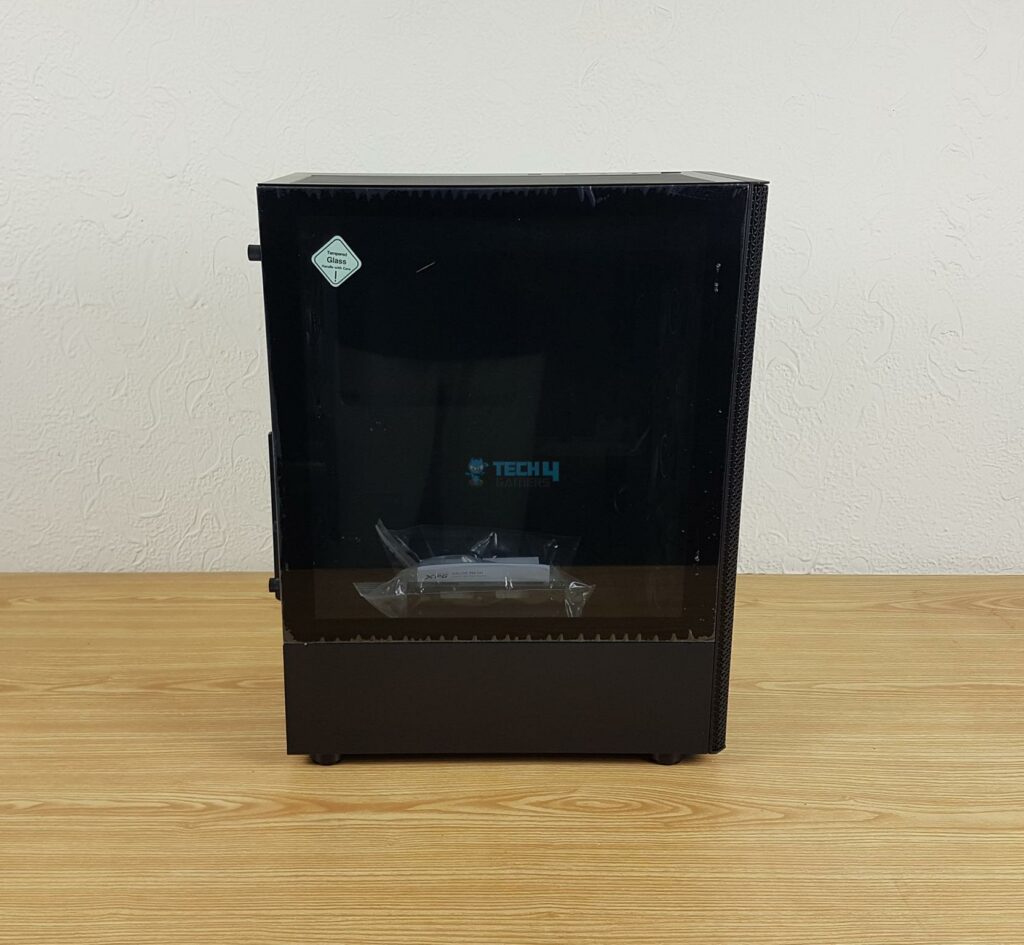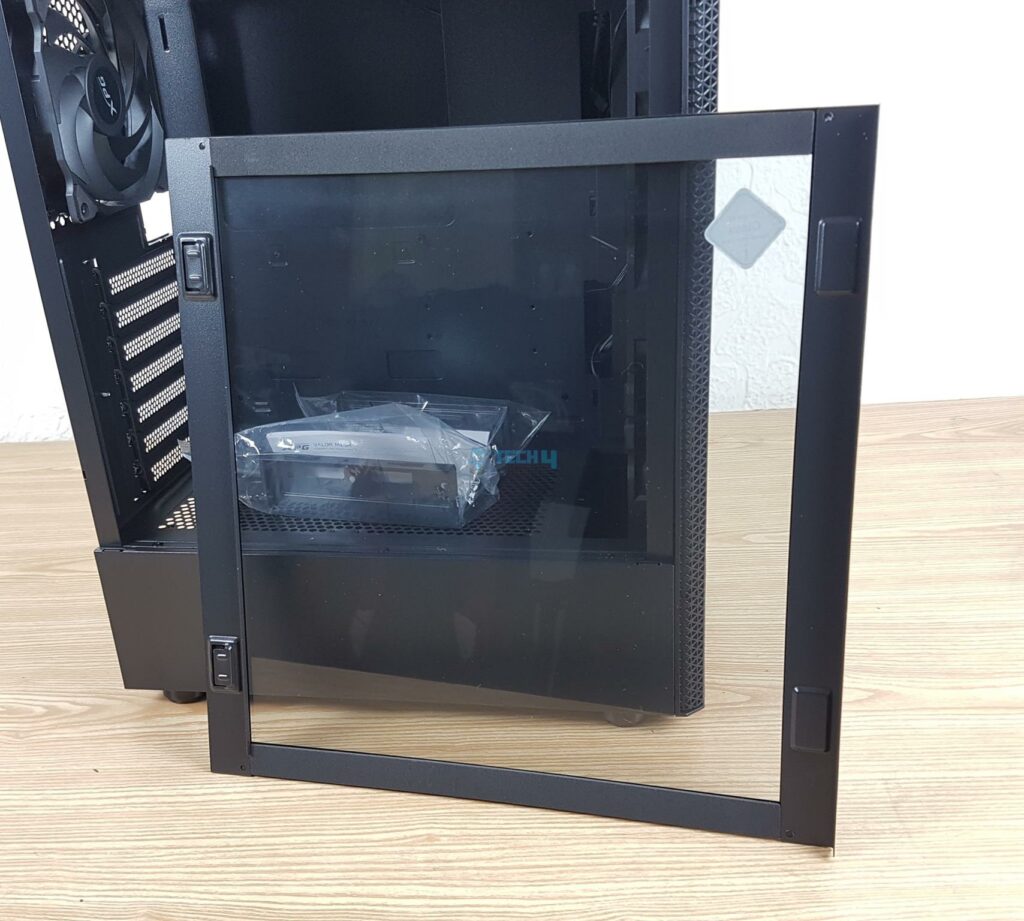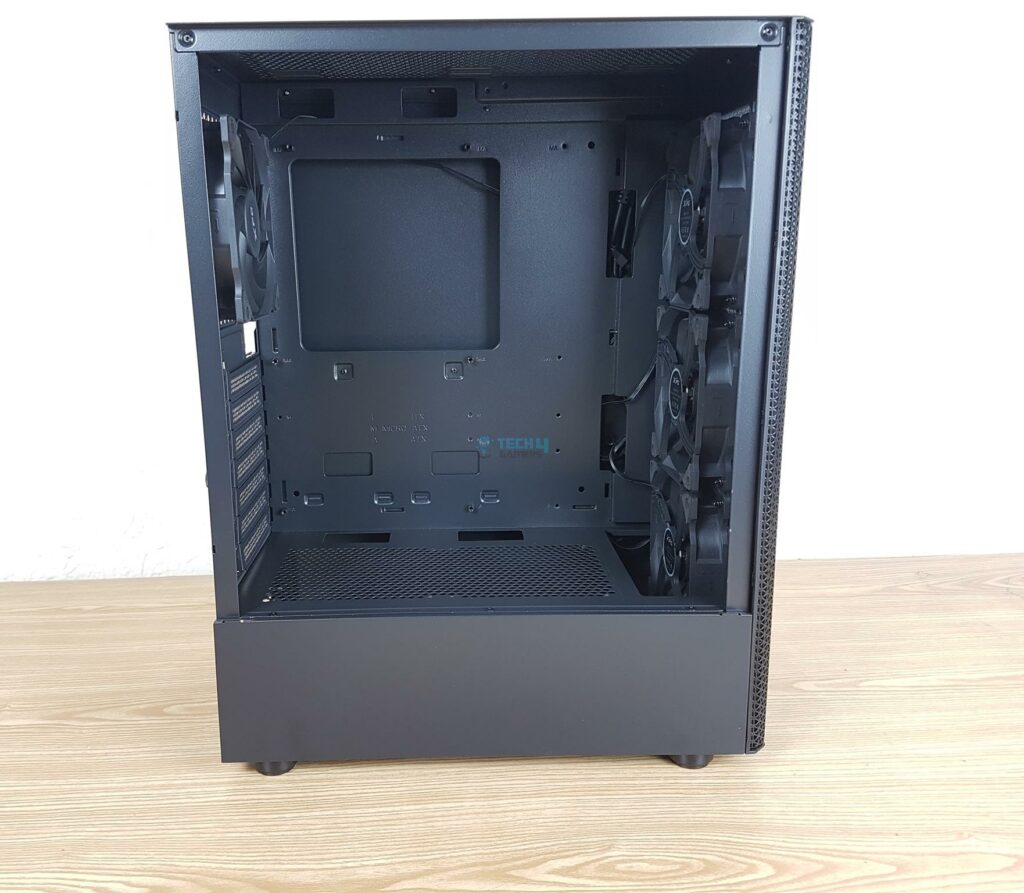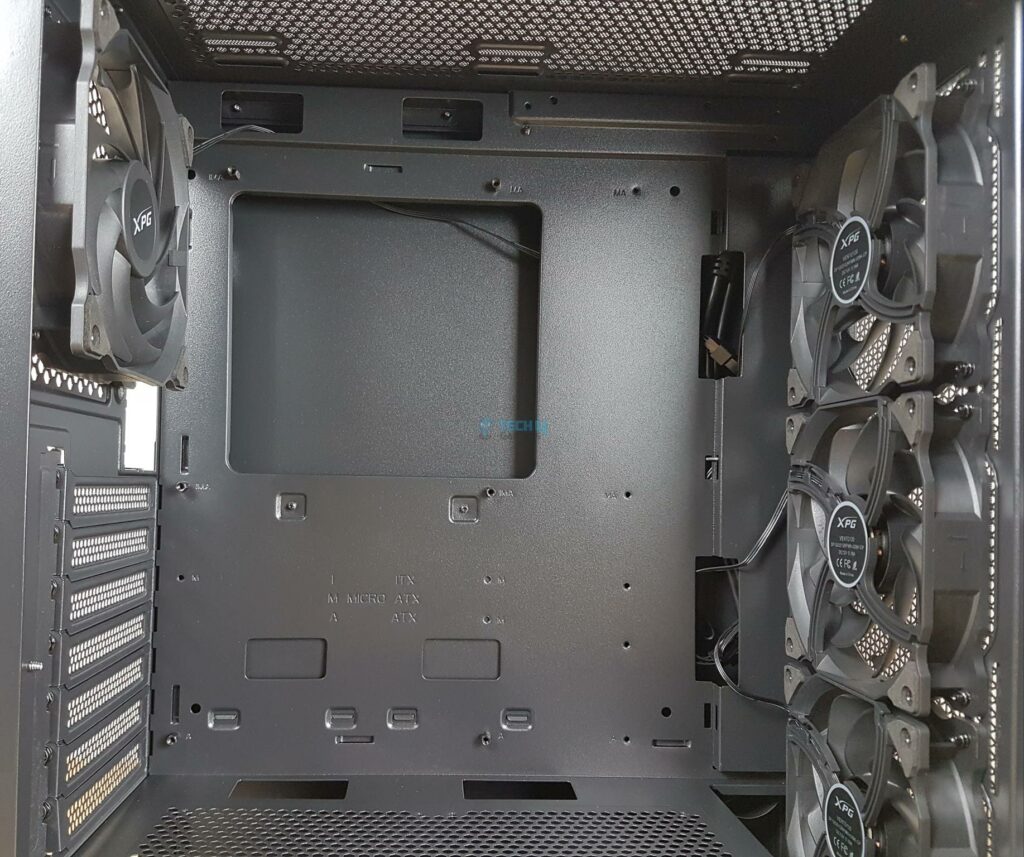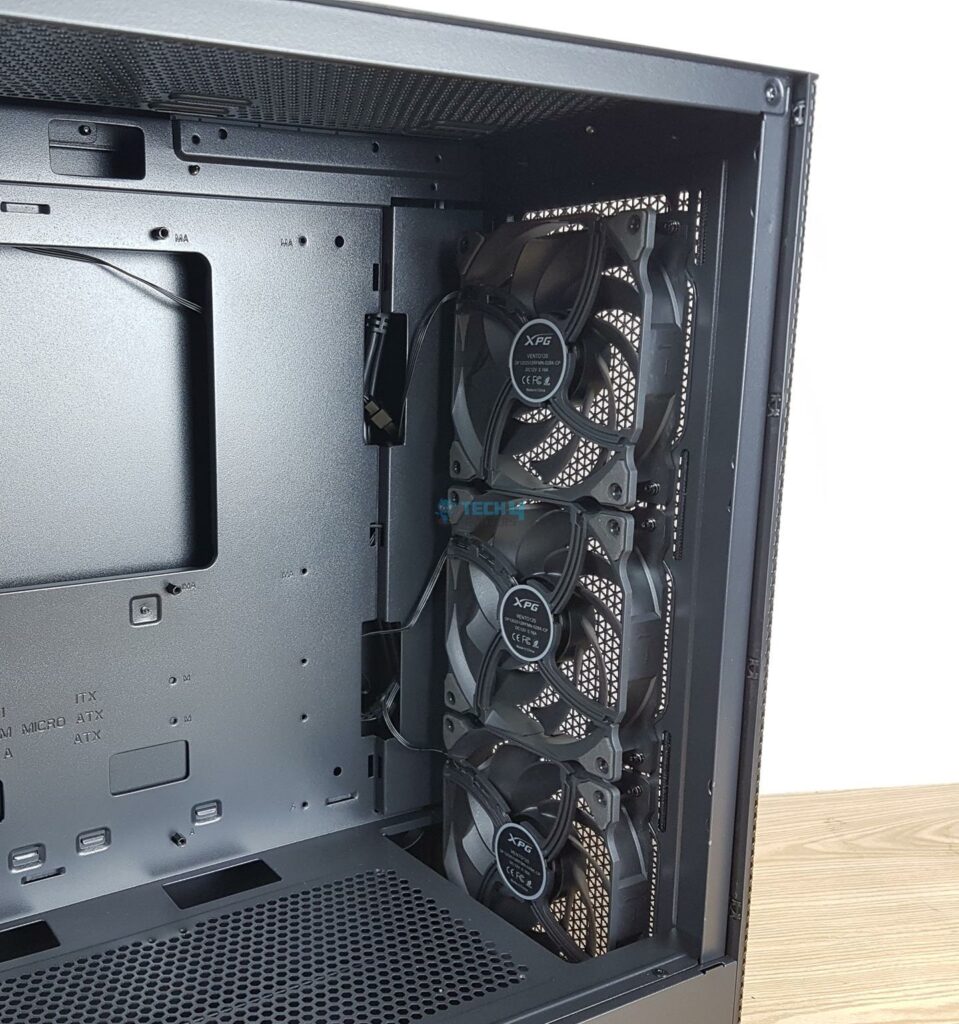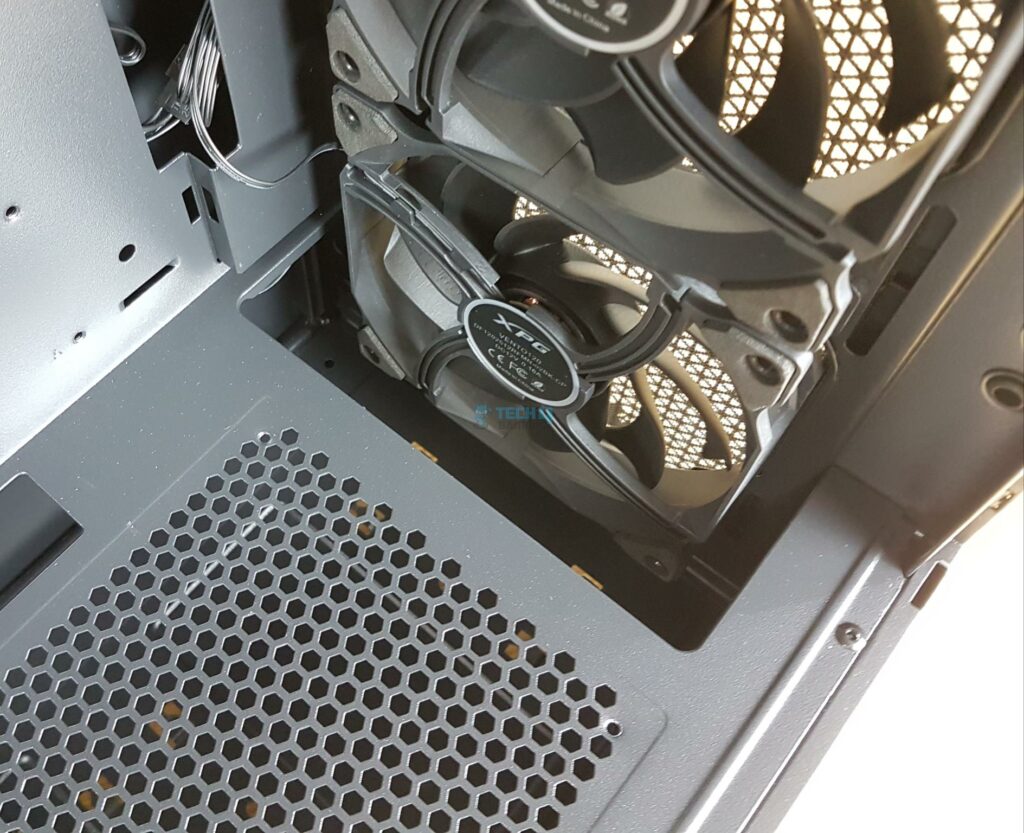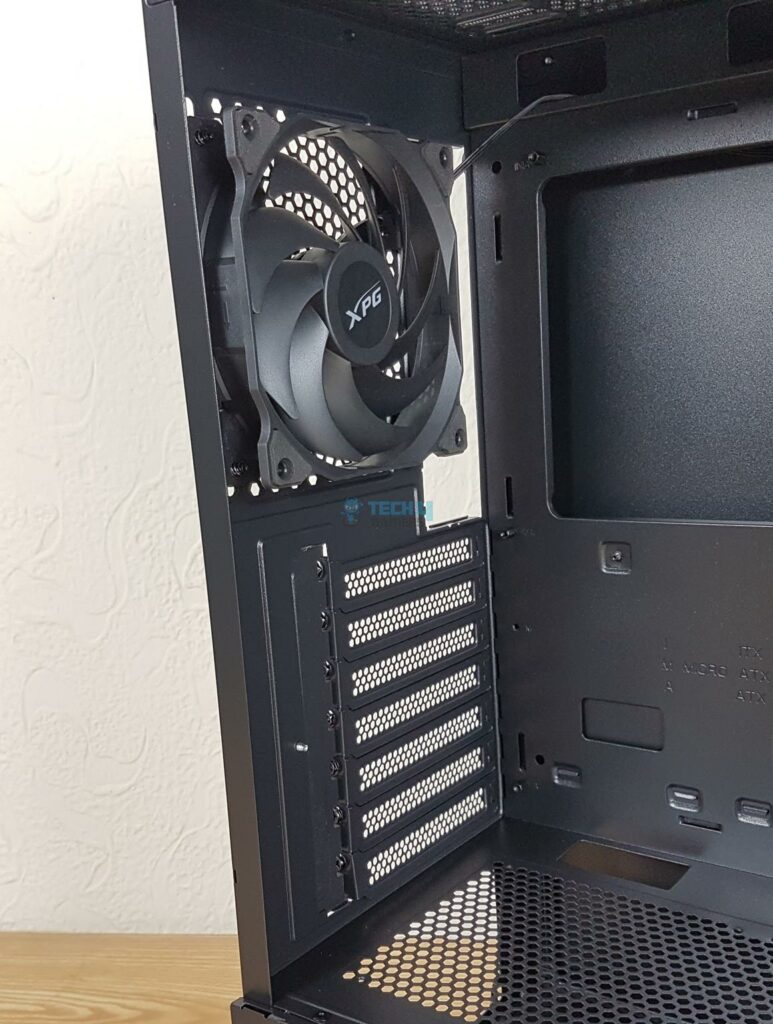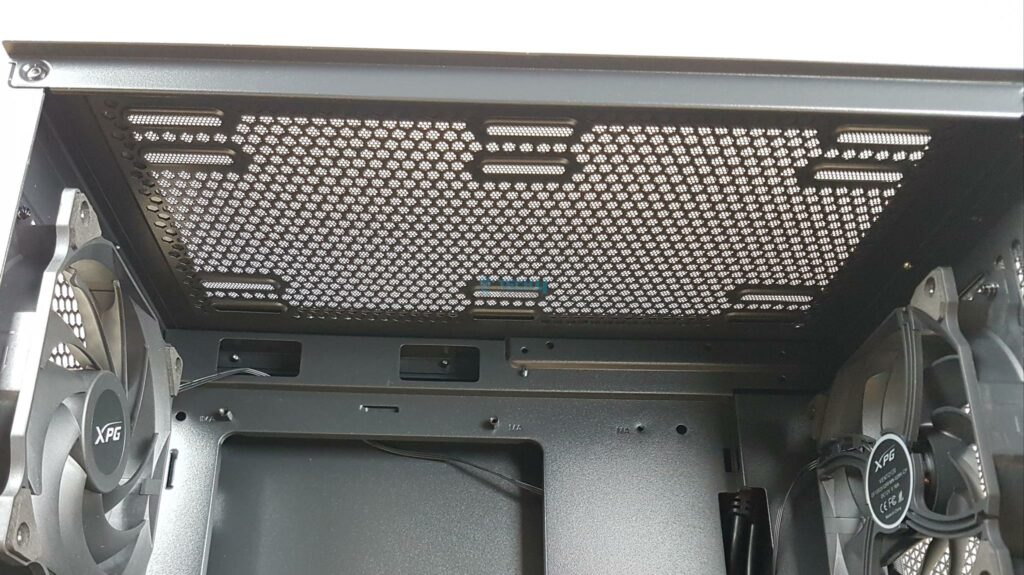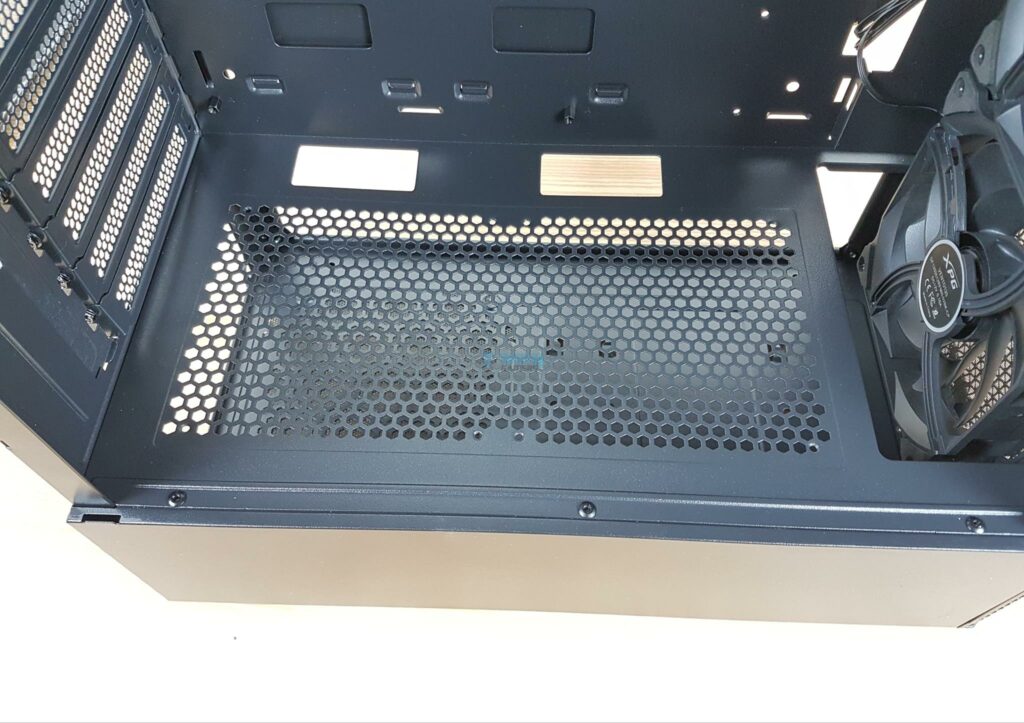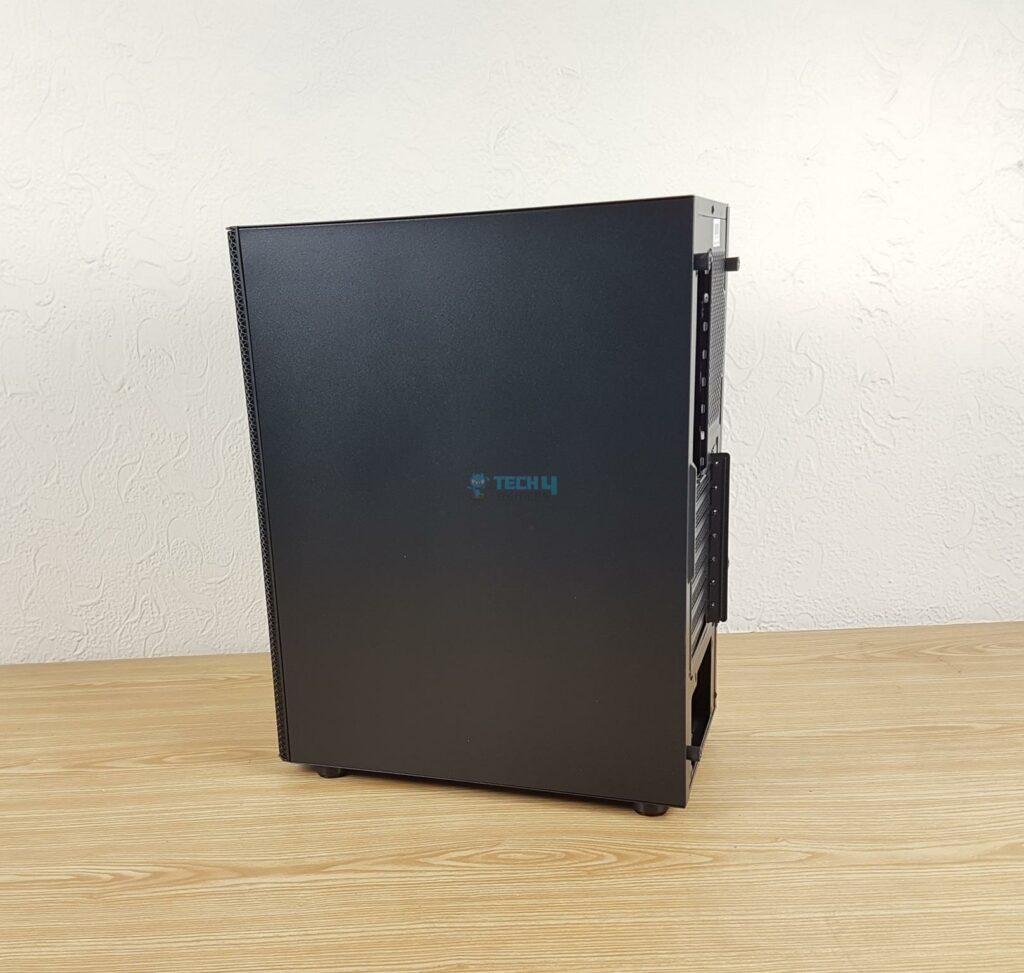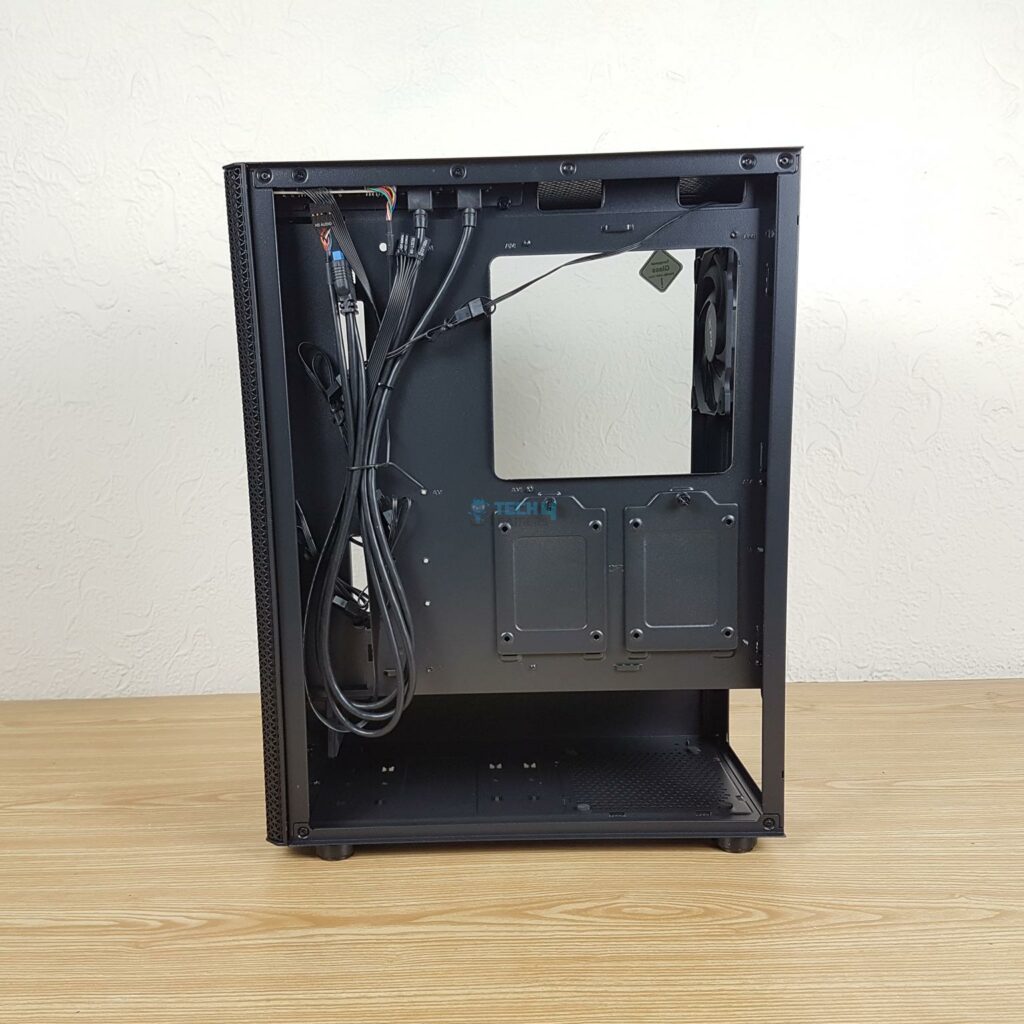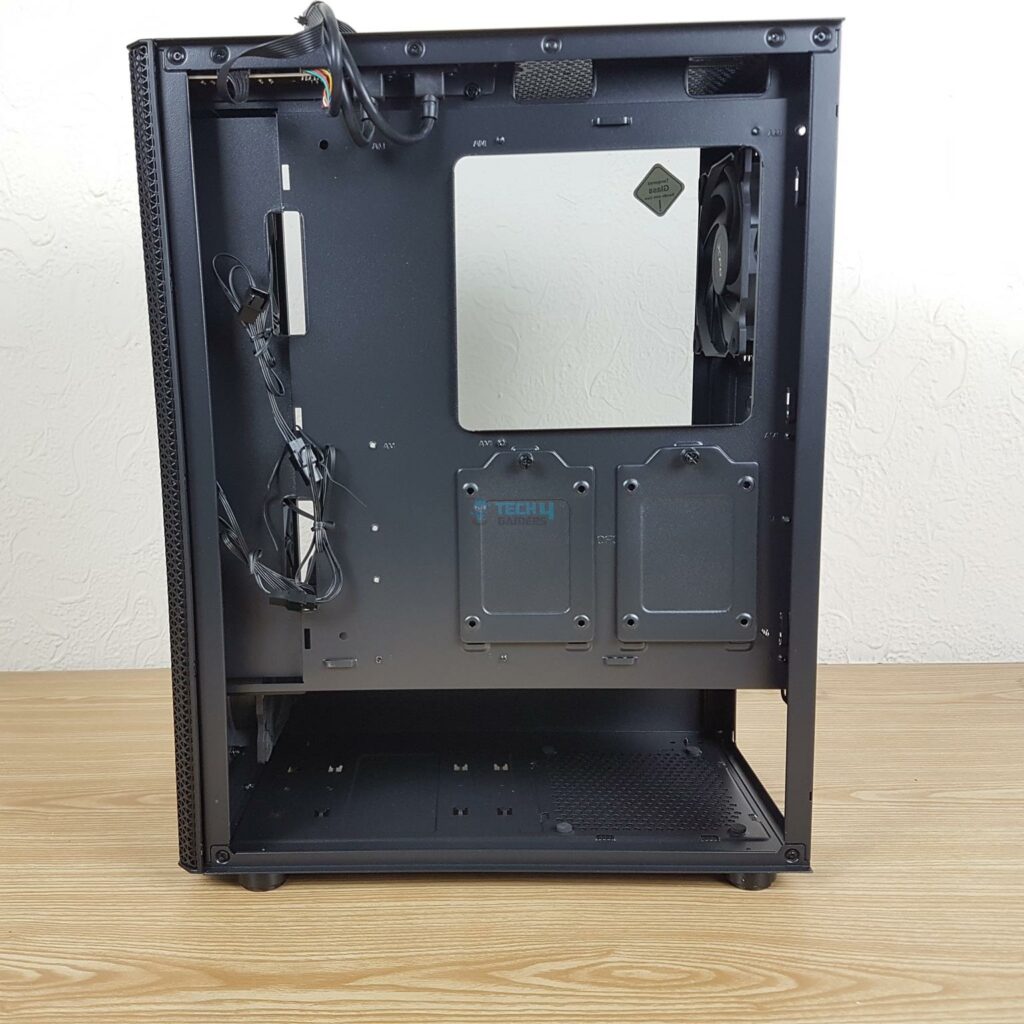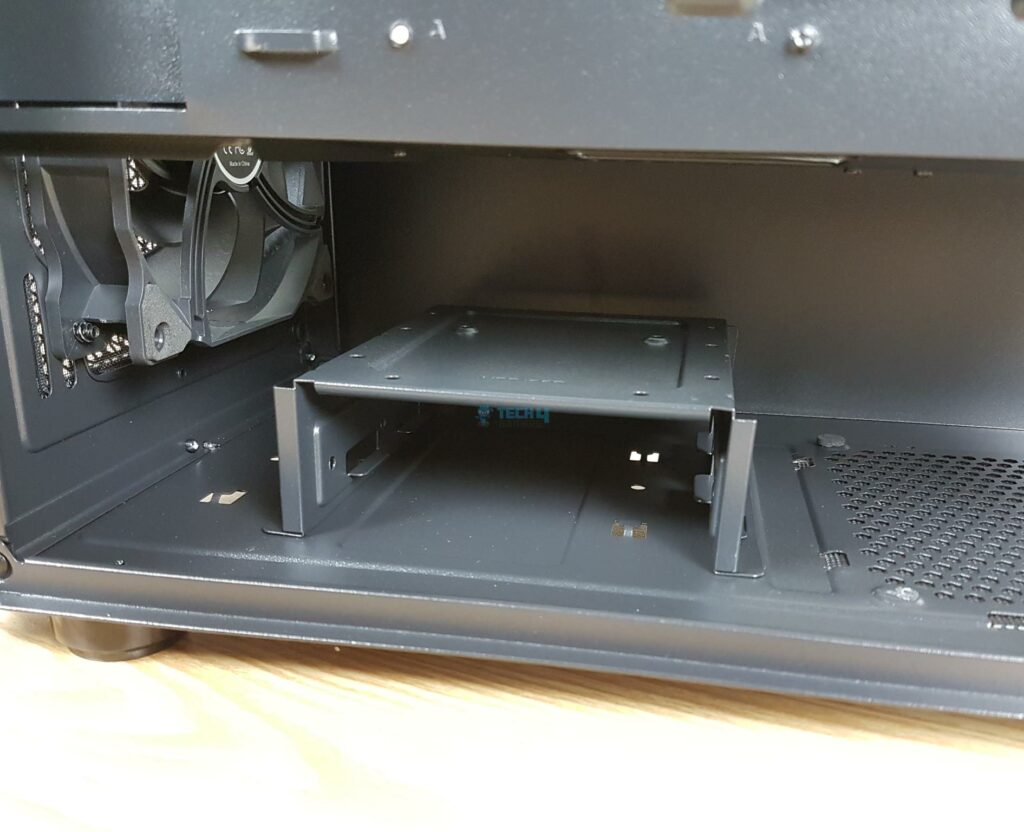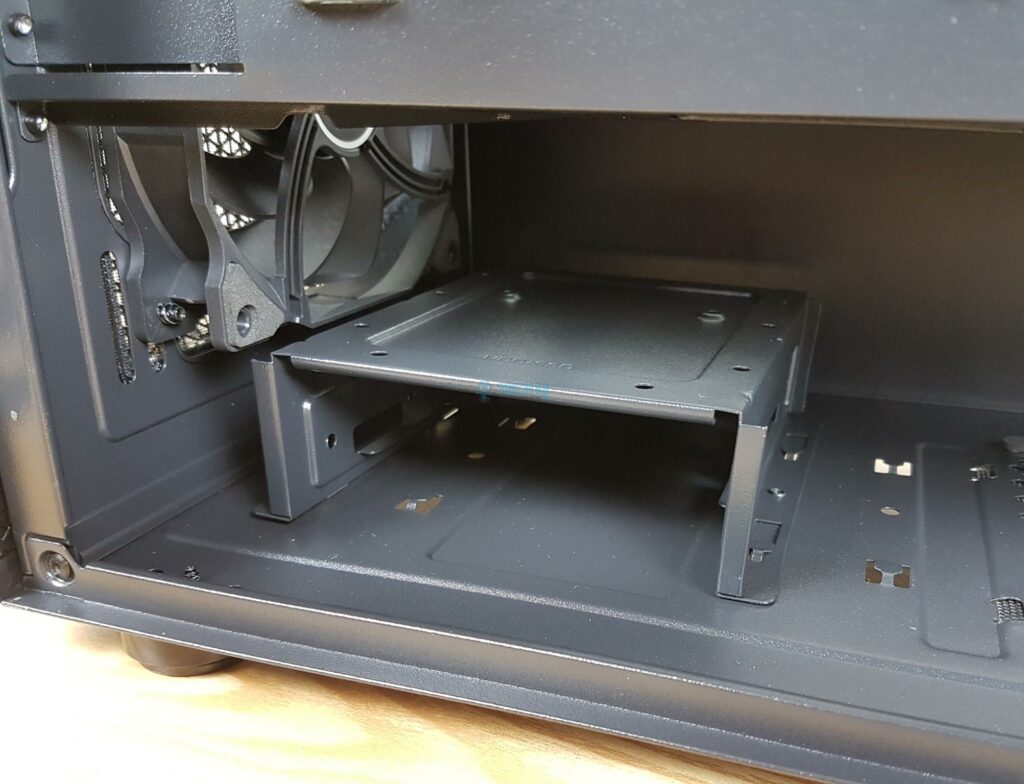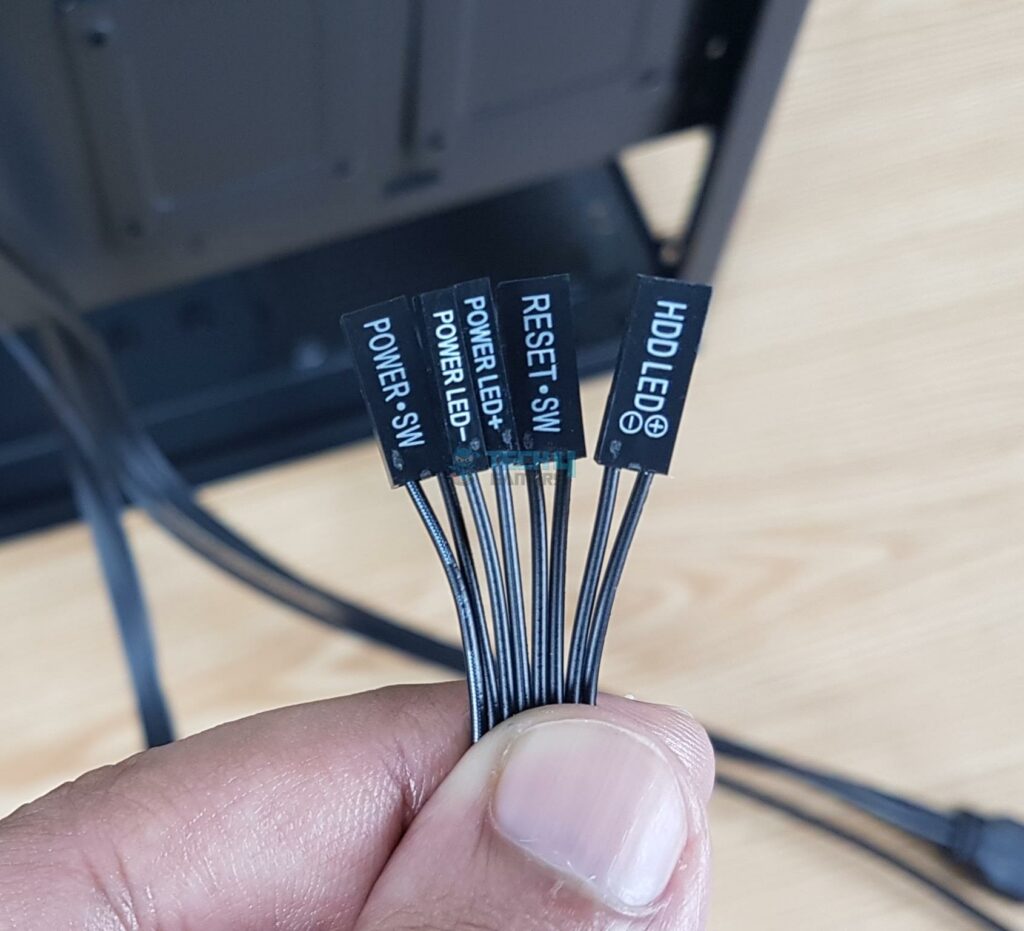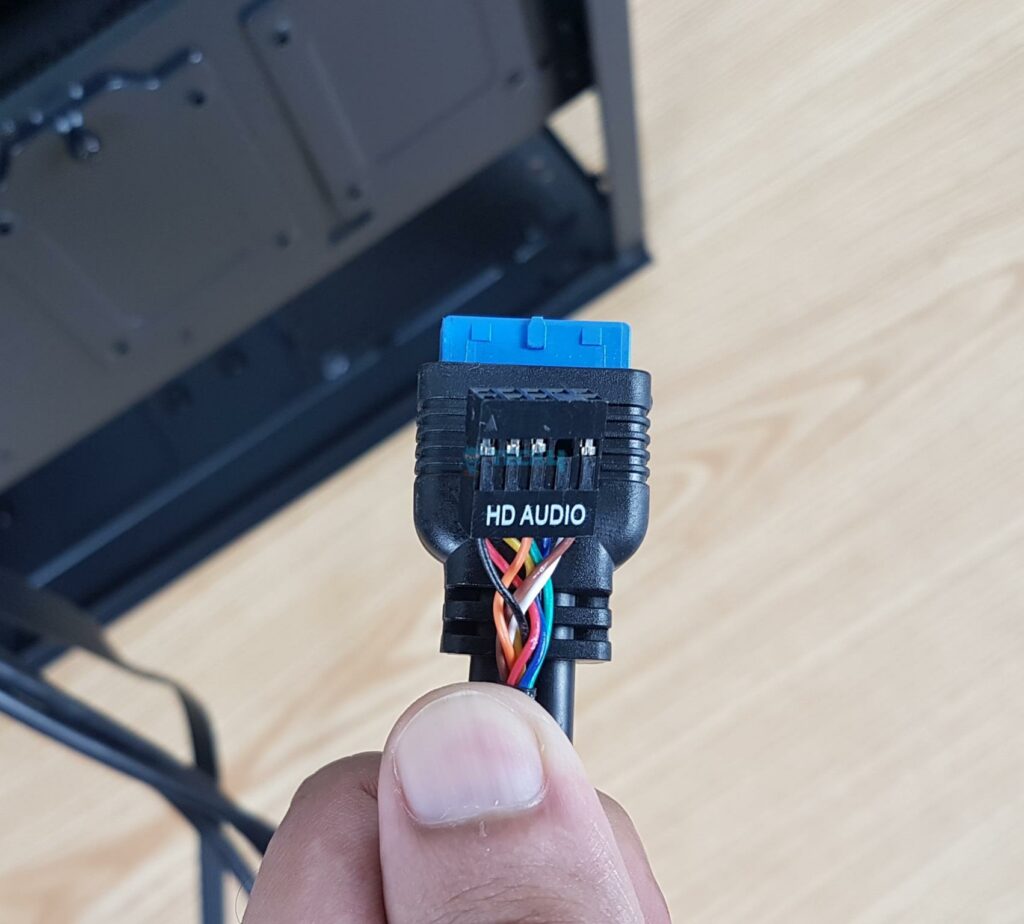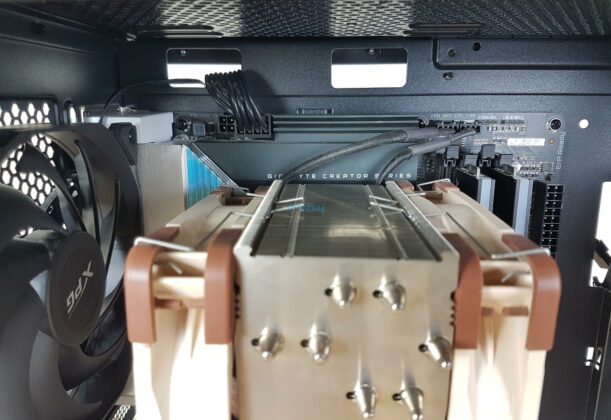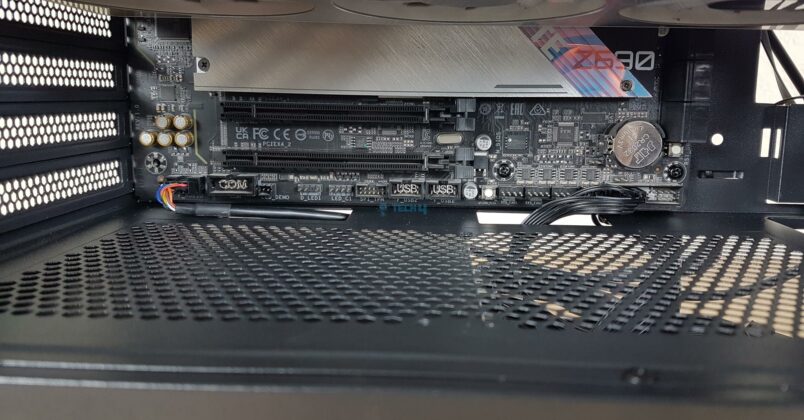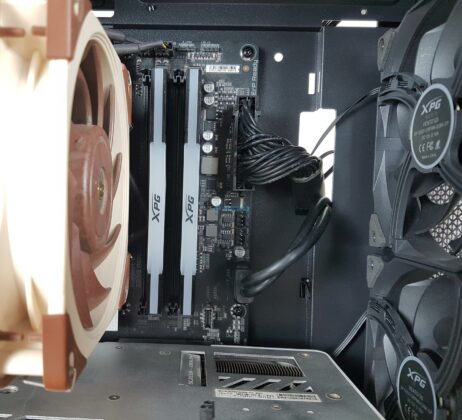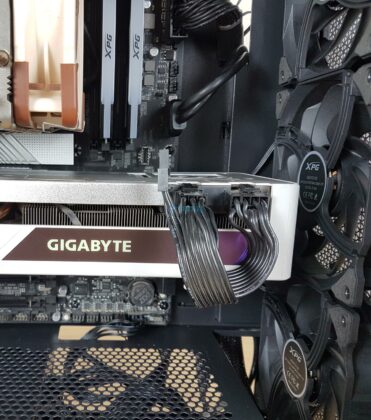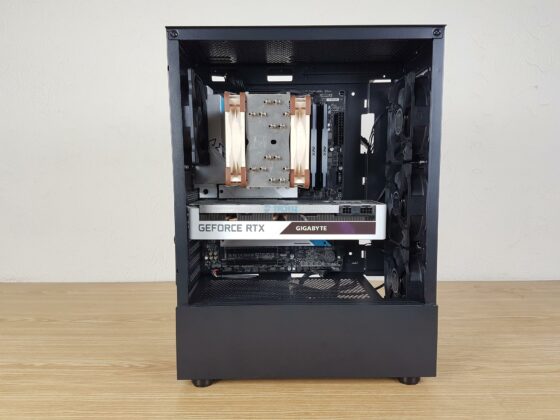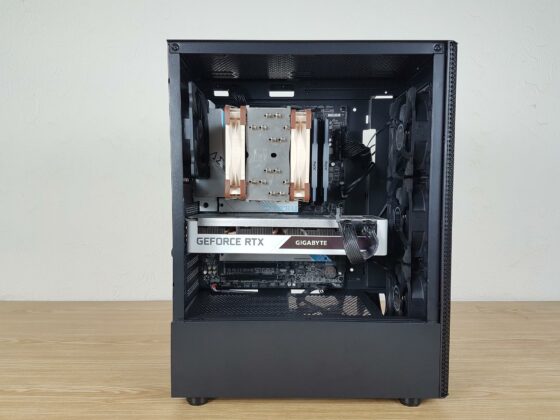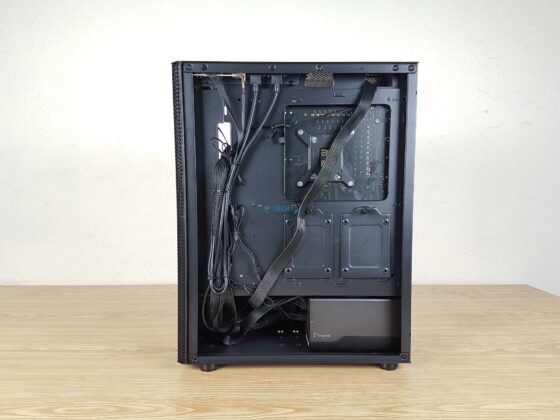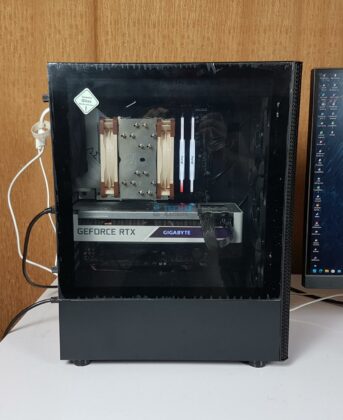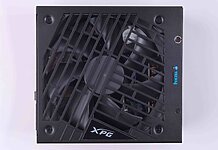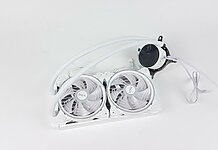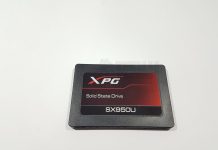Best Budget PC Case?
Review Summary
XPG has done a fantastic job with VALOR MESH. They have provided that has exceeded the expectations that we usually have from the entry-level gaming chassis. This is done at a price point that is hard to beat. If you are in the market and looking for a PC Case without spending much yet want to experience a feature-rich case, look no further, as XPG Valor Mesh is what you need.
Hours Tested: 8-10
Overall
-
Design - 9/10
9/10
-
Build Quality - 9/10
9/10
-
Features - 9.5/10
9.5/10
-
Cooling Provision - 9/10
9/10
-
Dust Protection - 9/10
9/10
Pros
- 4x Pre-Installed Fans
- Magnetic Perforated Front Panel
- Magnetic Front Dust Filter
- Magnetic Top Dust Filter
- Rail Mount System for fans and radiators
- 3mm Tempered Glass Panel
- Price
- Rear Fan’s Height Adjustment
- HDD Cage’s Location Adjustment
- Adequate Airflow
- Versatile IO Ports
- 360mm AIO Possible on front
Cons
- None
We are testing Valor Mesh from XPG arsenal after testing Levante X 360 AIO. This is a budget segment PC case that is a compact mid-tower that surprisingly packs more features in a small size package. It supports a full-size ATX motherboard with up to a 360mm size liquid cooler and a somewhat adequate storage solution.
Key Takeaways
- The XPG Valor Mesh PC Case impresses with its efficient cooling capabilities, boasting four pre-installed fans that ensure excellent airflow to keep your components running at optimal temperatures.
- You should get the XPG Valor Mesh if you prioritize efficient cooling, value a dust-free interior with magnetic dust filters, and seek exceptional value in a budget-friendly mid-tower PC case.
- You should not get the XPG Valor Mesh if you are an RGB lighting enthusiast or require extensive space for a larger CPU cooler. The case’s focus is on function rather than elaborate lighting features.
- Why you can trust Tech4Gamers: We understand the importance of making informed decisions. That’s why our team spends significant time testing every product we review. Find out more about how we test.
Let’s take a look at the specifications:
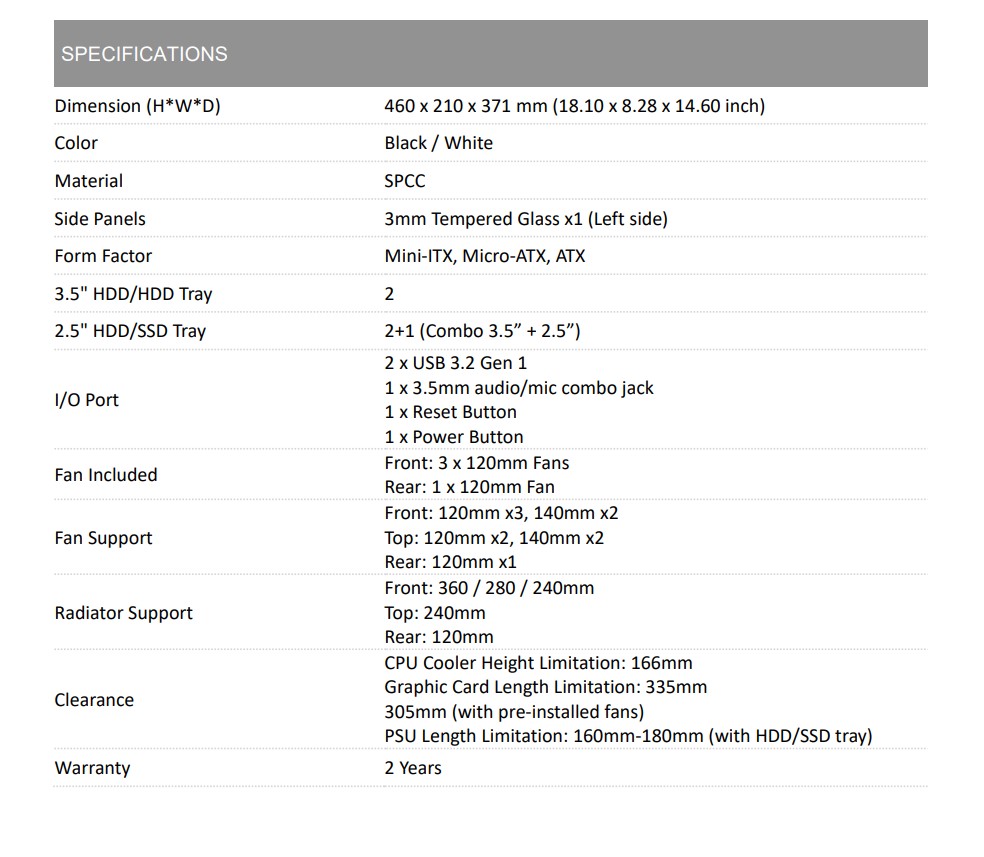
Packaging And Unboxing
Accessories
XPG has included the following:
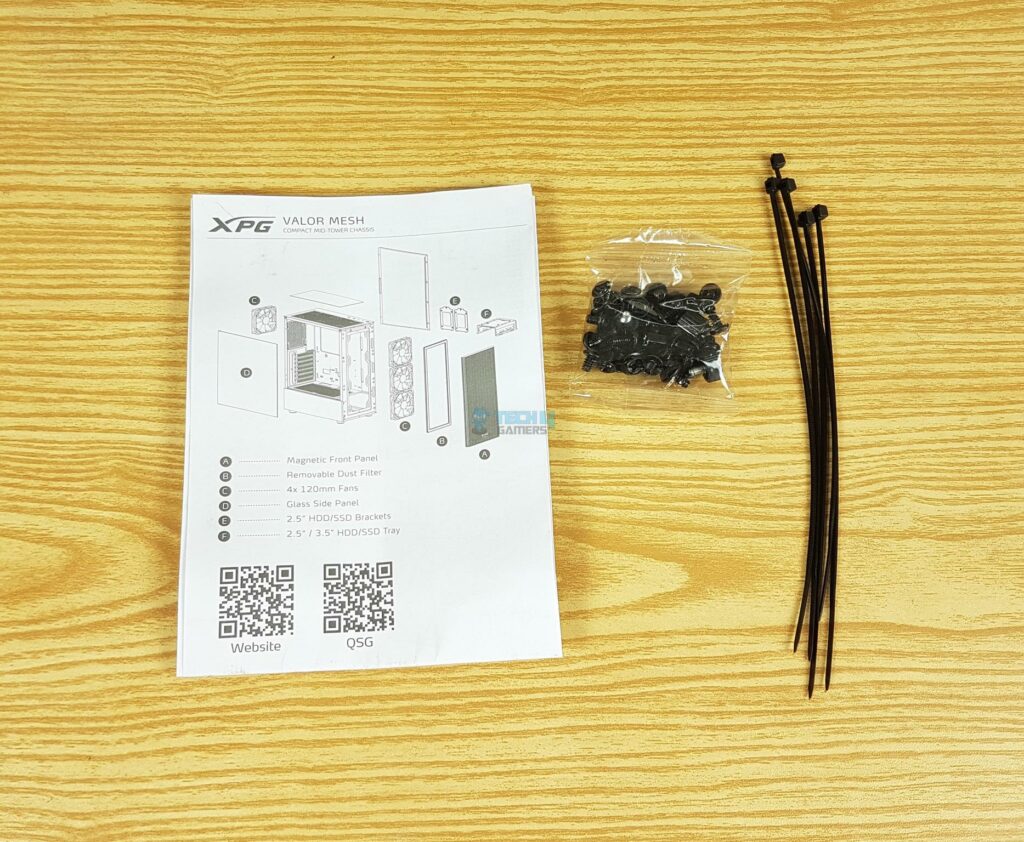
- 1x HDD cage
- 1x User Guide
- Zip Ties
- Various Screws
- Socket Nut
- Motherboard Standoffs
Design
The XPG VALOR MESH is a compact mid-tower chassis that comes in two colors; white and black. It has a dimension of 460x210x371mm. It is made of SPCC steel and tempered glass. The gross weight of the package is 5.85Kg so you can tell how compact and lightweight this case is.
Front
XPG’s Mesh case features a perforated steel front panel for optimal airflow and solid build quality. The panel is secured by two strong magnets and a thumb screw for shipping. Once on the table, you can rely on the magnetic handling. The angular curve on the panel adds both form and function to the case.
Excitement surged as I removed the front panel, exposing the plastic main body and steel perforations. The standout thumb screw in the center and the magnetic power at the base and side intrigued me.
The backside of the dust filter reveals six magnets for secure attachment. Removing the front panel exposes three pre-installed 120mm fans with 3-pin connectors, spinning between 1500 to 1600 RPM. The rail mount design allows for easy installation of 140mm fans.
Front options include up to three 120mm fans, two 140mm fans, or one 360mm radiator, providing flexibility for cooling configurations.
Top
The XPG Valor Mesh is 210mm wide. Looking at the top, we can spot a dust filter. It is magnetic as well. There is an IO port there as well on the far end. The dust filter is magnetic, which is a wise design. The magnetic strips run down on all four borders of the filter. The filter is perforated.
Removing the top dust filter, we can spot the perforated steel frame over the top. There are cut-to-size rail mounts there for 120mm and 140mm fans. In terms of fans and radiators, the following provision is possible on the top:
- Up to 2x 120mm fans
- Up to 2x 140mm fans
- Up to 1x 240mm radiator
There are:
- 2x USB 3.2 Gen1 Ports
- 1x Combined Audio Port
- 1x Reset Button
- 1x Power Button
The power button has a nice click to it and does not wobble. Seems like XPG was paying attention.
Rear
We have a standard layout on the rear. There is a cutout for the IO shield of the motherboard. To the right, there’s a vented area with a preinstalled 120mm fan; its height is adjustable via a rail mount. Kudos to XPG’s design team for these thoughtful details.
The center houses 7 PCIe slots with reusable covers and raised ends. At the bottom, there’s a standard ATX PSU mount. A PCIe bracket, secured by a screw, must be removed for device installation/removal.
Bottom
Checking the bottom of the XPG Valor Mesh, there’s a non-magnetic dust filter under the PSU bay—though I wish it were magnetic. Cutouts allow HDD cage installation, which isn’t pre-installed. On the right, a thumb screw secures the front panel. The rounded case feet provide lift for effective ventilation. The PSU bay has perforations for air intake, allowing installation in either direction; I prefer the fan side down.
Glass Panel Side
The XPG VALOR MESH features a 3mm thick tempered glass panel in a dual-chamber design. The panel, secured with two rear thumb screws, seamlessly flushes with the main frame, providing a clear view of the build. The light-tinted glass showcases the components, but internal lighting is recommended for full illumination.
Smartly designed, the glass panel includes rubber pads on the top and bottom to prevent scratching as it slides between the main frame. Two front latches securely lock onto the main frame.
Inside View
The XPG Valor Mesh, it’s a compact mid-tower with a standard design. Tested with upper mid-range hardware, it impressively handles various setups.
The motherboard tray, measuring 314x283mm (HxL), is rigid with 6 pre-installed standoffs, though oddly not all 9 were included. Support includes Mini-ITX, Micro-ATX, and ATX motherboards. XPG provides a socket wrench for standoff installation.
Cutouts on top accommodate EPS connectors, while the right side features main cutouts for cables – lacking rubber grommets. A single large cutout aids CPU cooler installation (up to 166mm in height), but a 40mm top displacement makes installing a 240mm cooler challenging. There’s a 14mm RAM height clearance concerning the radiator. Consider these points when evaluating the XPG Valor Mesh.
There are 3x 120mm fans pre-installed on the front to provide airflow to the front side of the case. It is nice to see a manufacturer going at length in this price range in the provision of rich features. These are XPG VENTRO 120mm fans.
There’s a 59 to 60mm cutout on the PSU shroud’s front side, suitable for a standard AIO with a 54mm total thickness (27mm radiator + 25mm fans). Push-pull works with a 240mm AIO, but it affects the limited 305mm graphics card length (335mm without pre-installed fans). Using a 360mm or 280mm AIO impacts the HDD cage, affecting PSU length and cable placement, details to follow.
There is another 120mm fan on the rear. A user can install a 120mm size radiator here as well. We can use 7x PCIe slots with vented covers. These are reusable slot covers which is a rare feature in this price range. These covers sit flush with the chassis frame. The right picture shows the top area from the inside of the case.
The PSU shroud in the picture is a fixed part of the main frame with ventilation perforation and 120mm fan mounting holes. Although the brand’s specifications don’t mention fan housing in this area, it’s worth noting. Two cutouts near the motherboard tray allow cable passage for bottom headers on the motherboard.
The protruding area from the main frame is where the glass panel rests. The back panel, made of steel, is a fingerprint magnet, so handle it with care.
The picture displays the default layout of the chase with the front panel and fan cables neatly arranged. The bottom chamber is empty. We’ve maximized backside exposure by moving cables and utilized 9 cable tie points in this compact design.
Two 2.5” drive caddies are behind the motherboard tray. A recessed area upfront conceals cables, and angular cutouts on the side offer additional tie points at the border.
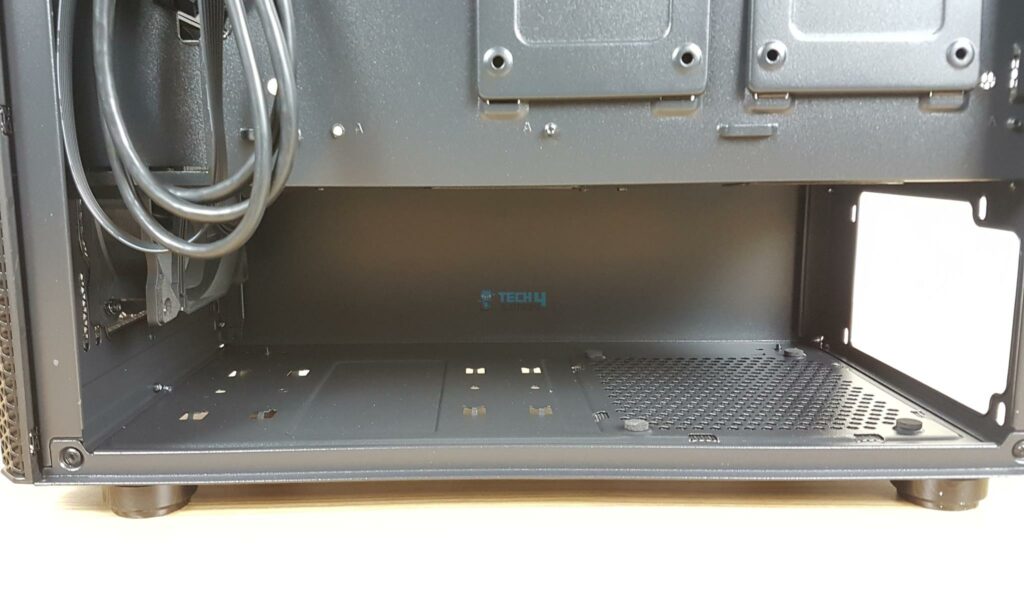
Now, we are showing a bottom chamber. On the right, we’ve got a PSU bay with 4 anti-vibration rubber feet. The HDD cage on the left is adjustable in two spots, giving flexibility for the build. If you’re covered with 2.5″ and M.2 drives, you can skip it entirely.

The pic reveals crucial details. Bottom chamber space with fans: 311mm (PSU+ cables). With 360mm/280mm AIO on the front (no HDD cage), it’s 278mm for PSU+ cables. HDD tray with fans (no AIO): 180mm for PSU+ cables. Shifting HDD cage toward PSU bay: 160mm for PSU+ cables.
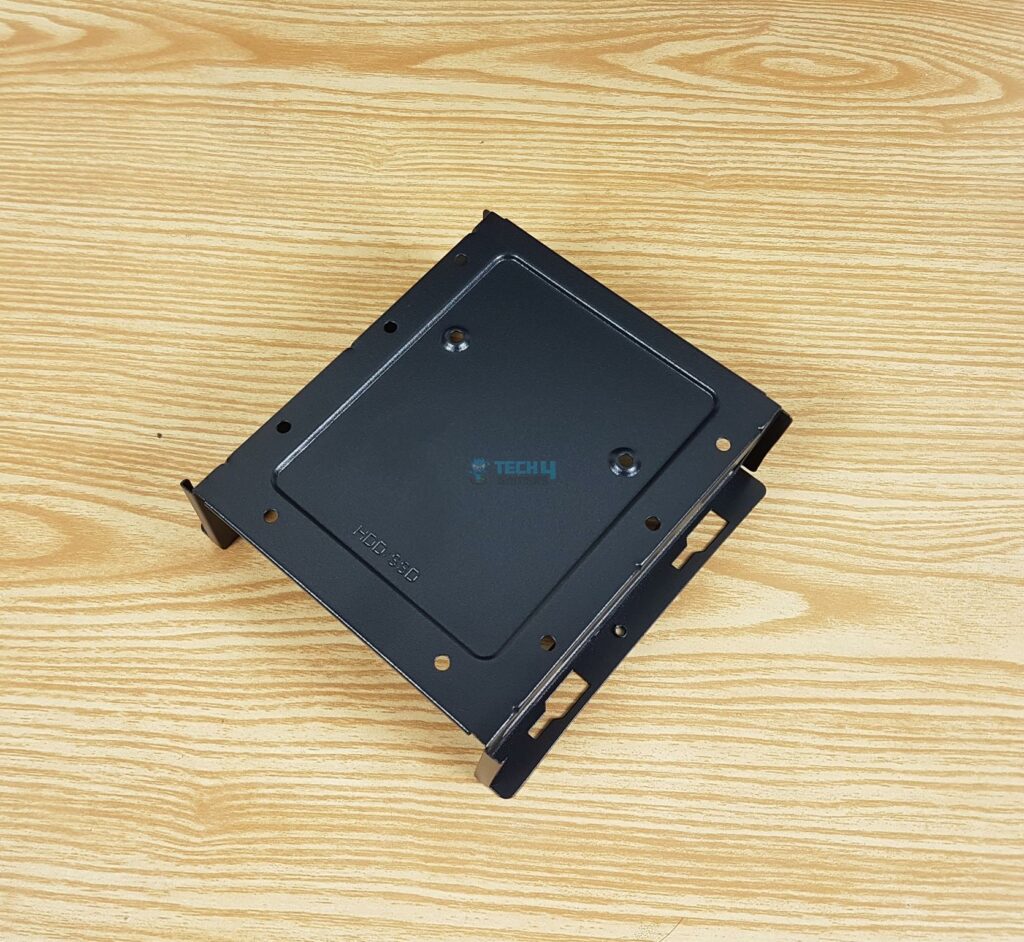
The above picture shows the HDD cage. It is not pre-installed, and it is not a tool-less design. I can give it a pass, given a low price tag. The user can install a 2x 3.5” or 2x 2.5” drive or a combination of these in this cage.
Installing an HDD cage here provides a PSU clearance of 160mm and 180mm. Note a 1-2mm difference from XPG’s measurements, likely within the margin of error.
The left picture shows the front panel system panel connectors. The right picture shows the USB 3.2 Gen 1 connector and an HD Audio connector.
Test Build And Experience
We have used the following configuration for testing of this case:
- Intel i7 12700k
- GIGABYTE Z690 AERO G
- Noctua NH-U12A
- XPG Lancer RGB 32GB DDR5 @ 6000MHz kit
- GIGABYTE GeForce RTX 3070 VISION OC
- Sabrent Rocket Q 500GB NVMe SSD [OS]
- Fractal Design ION+ 2P 860W PSU
Installed the cooler and RAM outside the case, a familiar routine. Checked that installing the cooler after the motherboard doesn’t pose issues. The rear fan cable was shifted for motherboard placement. Added 3x standoffs. Installed modular PSU with EPS, PEG, and ATX cables; smooth cable routing.
Routed HD audio and front panel connectors before graphics card installation. Minimal cable management yielded a clean result. Note: Non-modular PSU users with an HDD cage may need creative cable management in this case.
Below are some pictures from the installation process.
Testing
We have locked P-Cores at 4.8GHz and E-Cores at 3.8GHz using 1.220V using Intel XTU. We have used Noctua NT-H1 thermal paste. We have used AIDA64 FPU and GPU Load tests at the same time. The 4x XPG pre-installed fans were running at full speed. The Noctua NF-A12x25 PWM fans on the NH-U12A were running at full speed. The graphics card was operating at its stock settings.
XPM was loaded from the UEFI BIOS. The rest of the settings were on Auto and Stock in the UEFI/BIOS. The system was put on idle for a minimum of 5 minutes. The ambient temperature was between 27°C and 28°C. Let’s take a look at the results.
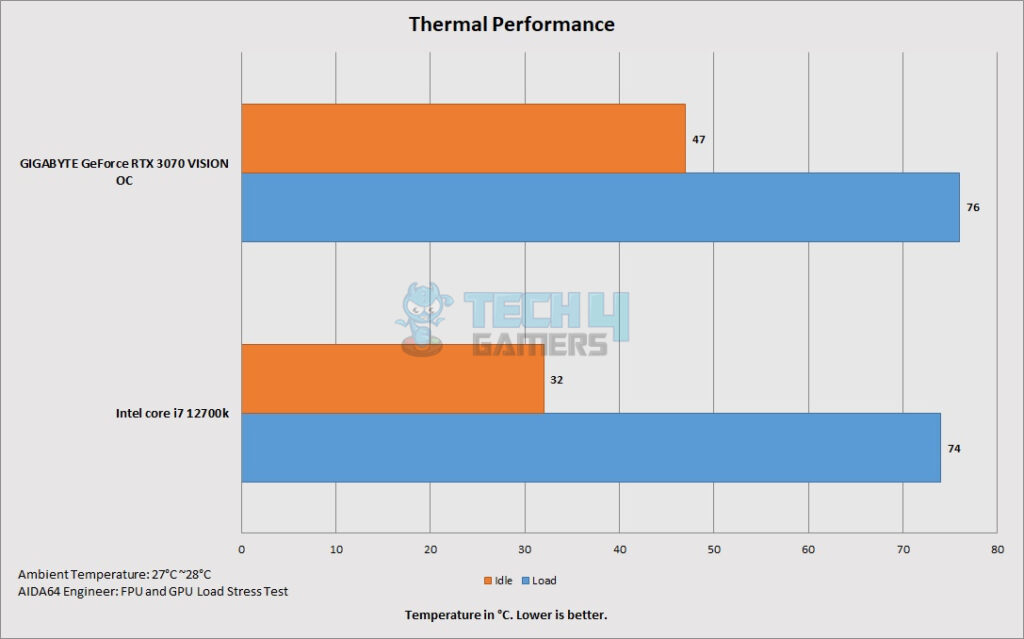
We have a good all-round performance in the thermals department from XPG Valor Mesh.
Acoustic
The overall noise level was at 52~53 dBA on ambient 33 dBA, which is fine.
Should You Buy It or Not?
After a thorough examination of the XPG Valor Mesh PC Case, I’ve concluded that:
Buy It If:
✅Efficient Cooling: The XPG Valor Mesh PC Case stands out with its impressive cooling capabilities, featuring four pre-installed fans that ensure excellent airflow. If you prioritize efficient cooling for your components, this case is a solid choice.
✅Dust-Free Interior: The magnetic dust filters on the front and top panels provide a hassle-free solution for maintaining a clean and dust-free interior. If you want a case that helps prolong the life of your hardware by keeping it free from dust, the Valor Mesh is a good option.
✅Versatile Cooling Configurations: The case supports various cooling configurations, including up to a 360mm radiator on the front panel and up to two 140mm fans or a 240mm radiator on the top panel.
Don’t Buy It If:
❌RGB Lighting Enthusiasts: If you are a fan of vibrant RGB lighting and want your PC case to have a flashy appearance, the XPG Valor Mesh may not be the right fit, as it focuses on function rather than elaborate lighting features.
❌Limited CPU Cooler Installation Space: The case has a 40mm top displacement, making it challenging to install a 240mm cooler. If you plan on using a larger CPU cooler, you may want to consider a case with more space for ease of installation.
Conclusion
In conclusion, my experience with the XPG Valor Mesh PC Case has been remarkably positive. This budget-friendly mid-tower excels in efficient cooling, boasting four pre-installed fans for optimal airflow. The magnetic dust filters add a practical touch, keeping the interior clean and hardware dust-free.
The case’s design, made of SPCC steel and tempered glass, balances form and function. The build process was smooth, and the case accommodated components effectively. During testing, it handled various setups impressively, showcasing versatility.
With its budget-friendly price, the XPG Valor Mesh offers exceptional value for both novice and experienced builders. While it lacks flashy RGB lighting, it compensates with practical features and efficient cooling solutions.
In essence, if you prioritize efficient cooling, a dust-free interior, and value for your budget, the XPG Valor Mesh is a solid choice. However, for enthusiasts seeking elaborate RGB lighting or more space for a larger CPU cooler, alternative options may be considered. Overall, it’s a reliable and well-designed option for entry-level gamers, PC users, and system integrators.
Recent Updates
- December 16, 2023: A few text changes to improve readability.
Thank you! Please share your positive feedback. 🔋
How could we improve this post? Please Help us. 😔
[Hardware Reviewer & Editor]
Meet Nauman Siddique, a highly experienced computer science graduate with more than 15 years of knowledge in technology. Nauman is an expert in the field known for his deep understanding of computer hardware.
As a tech tester, insightful reviewer, and skilled hardware editor, Nauman carefully breaks down important parts like motherboards, graphics cards, processors, PC cases, CPU coolers, and more.
- 15+ years of PC Building Experience
- 10+ years of first-hand knowledge of technology
- 7+ years of doing in-depth testing of PC Hardware
- A motivated individual with a keen interest in tech testing from multiple angles.
- I majored in Computer Science with a Masters in Marketing
- Previously worked at eXputer, EnosTech, and Appuals.
- Completed Course in Computer Systems Specialization From Illinois Tech


 Threads
Threads
